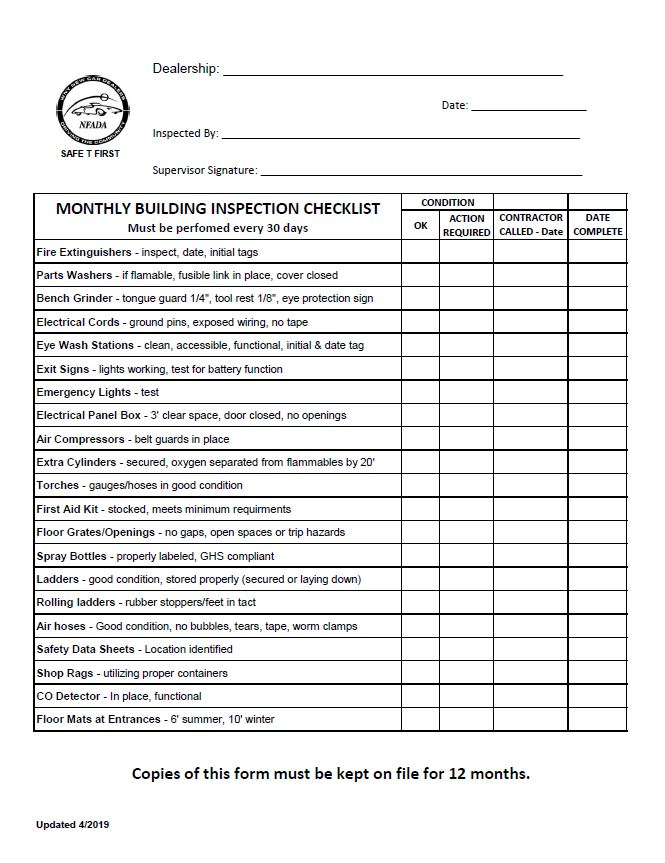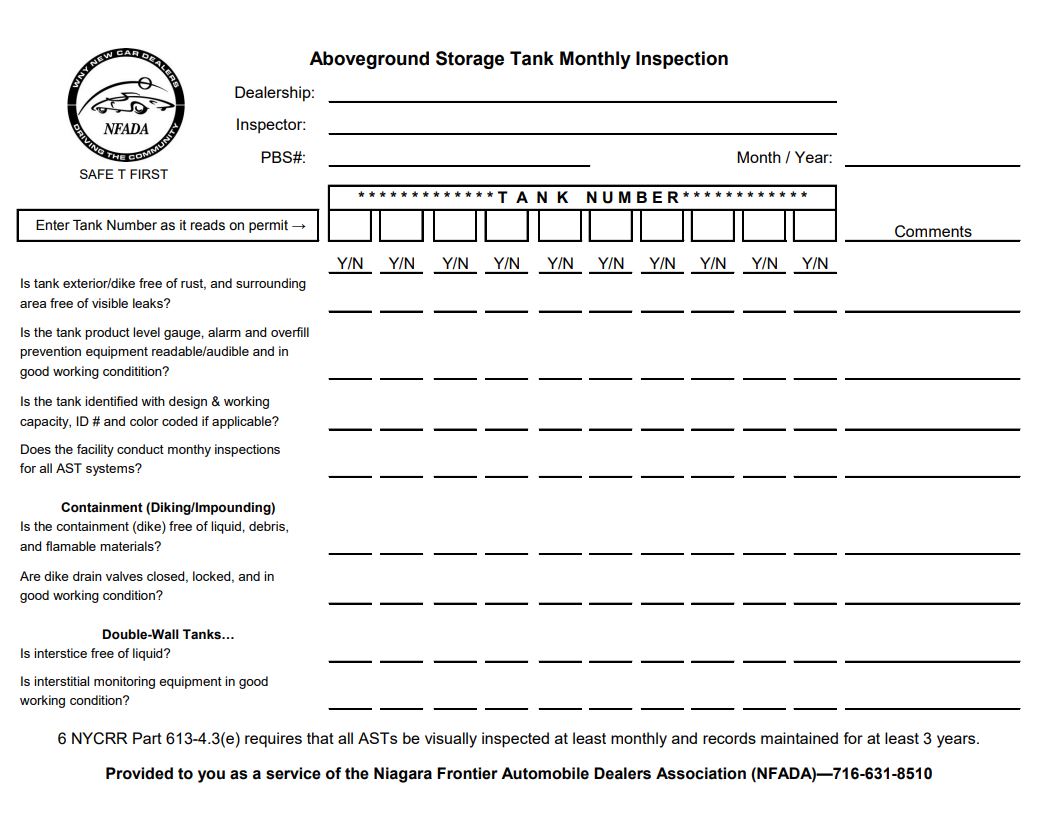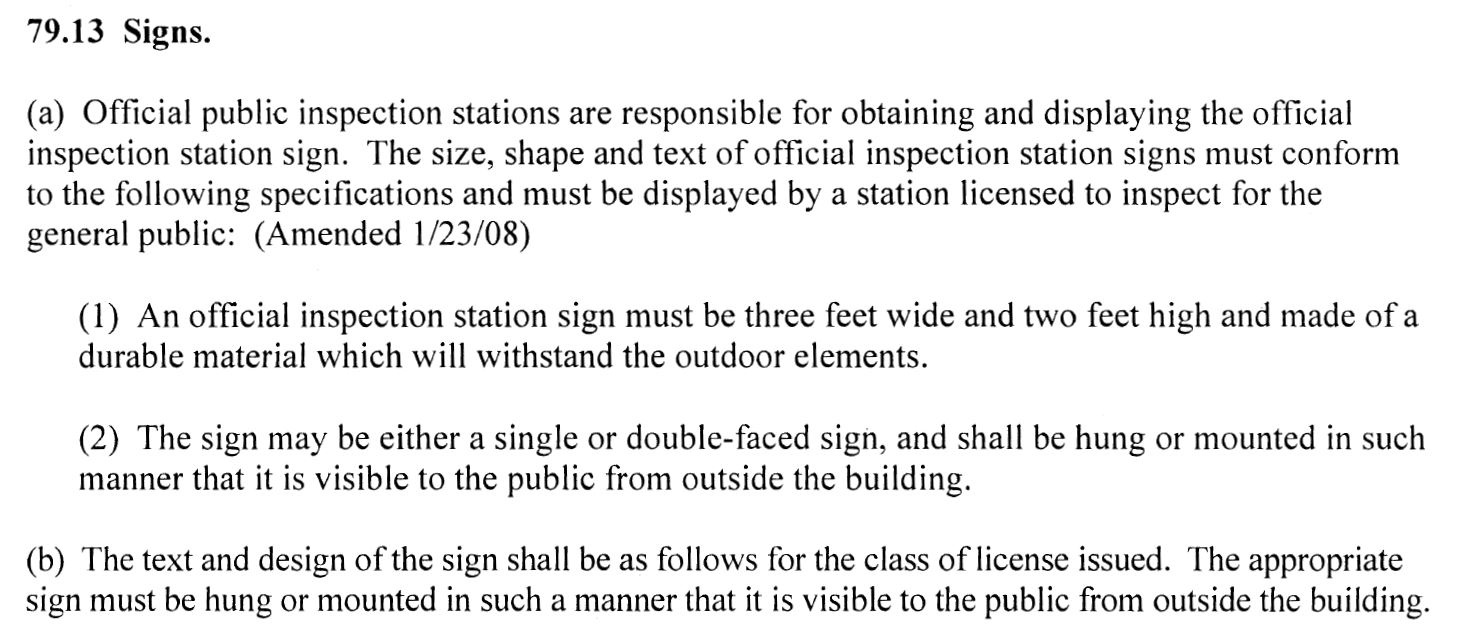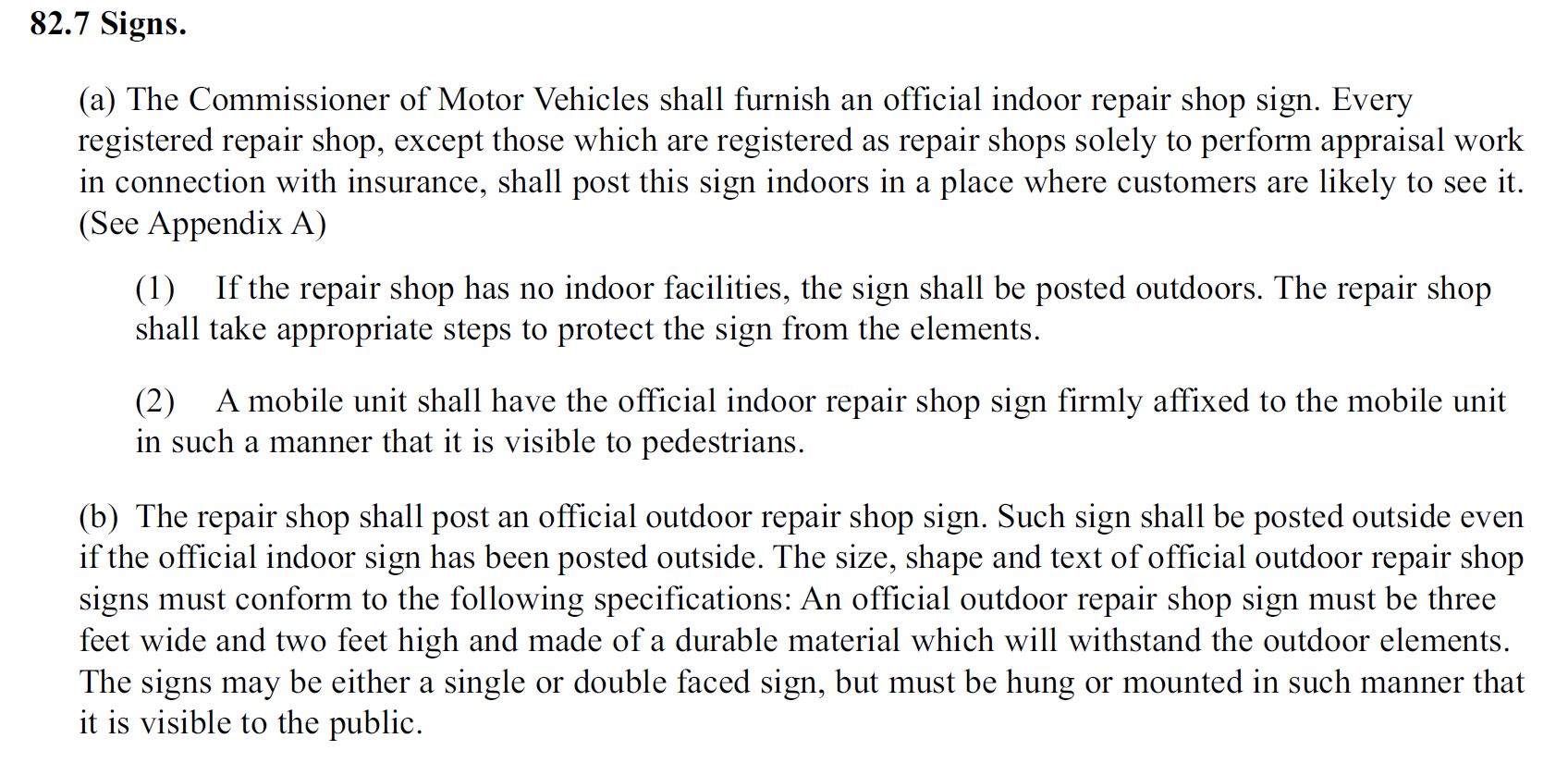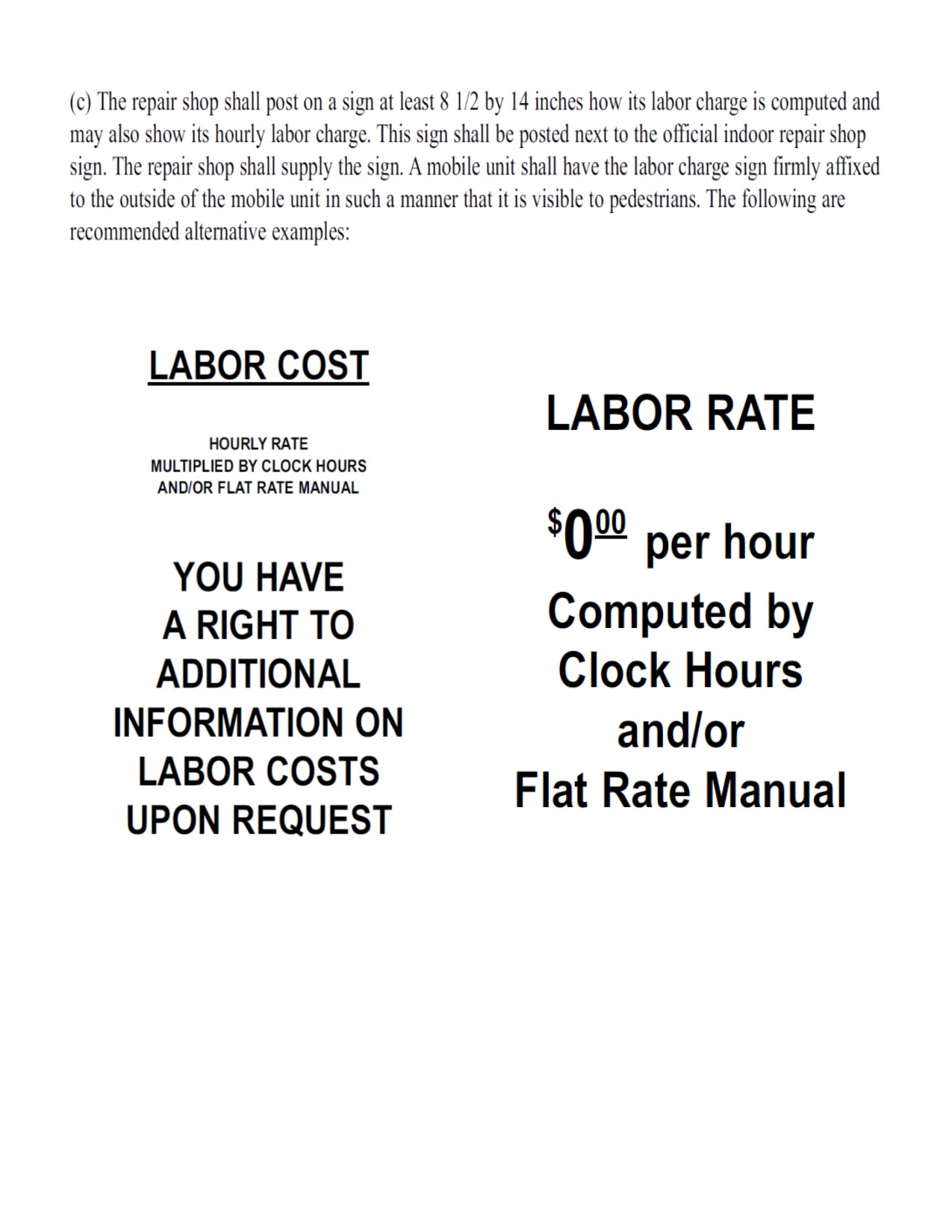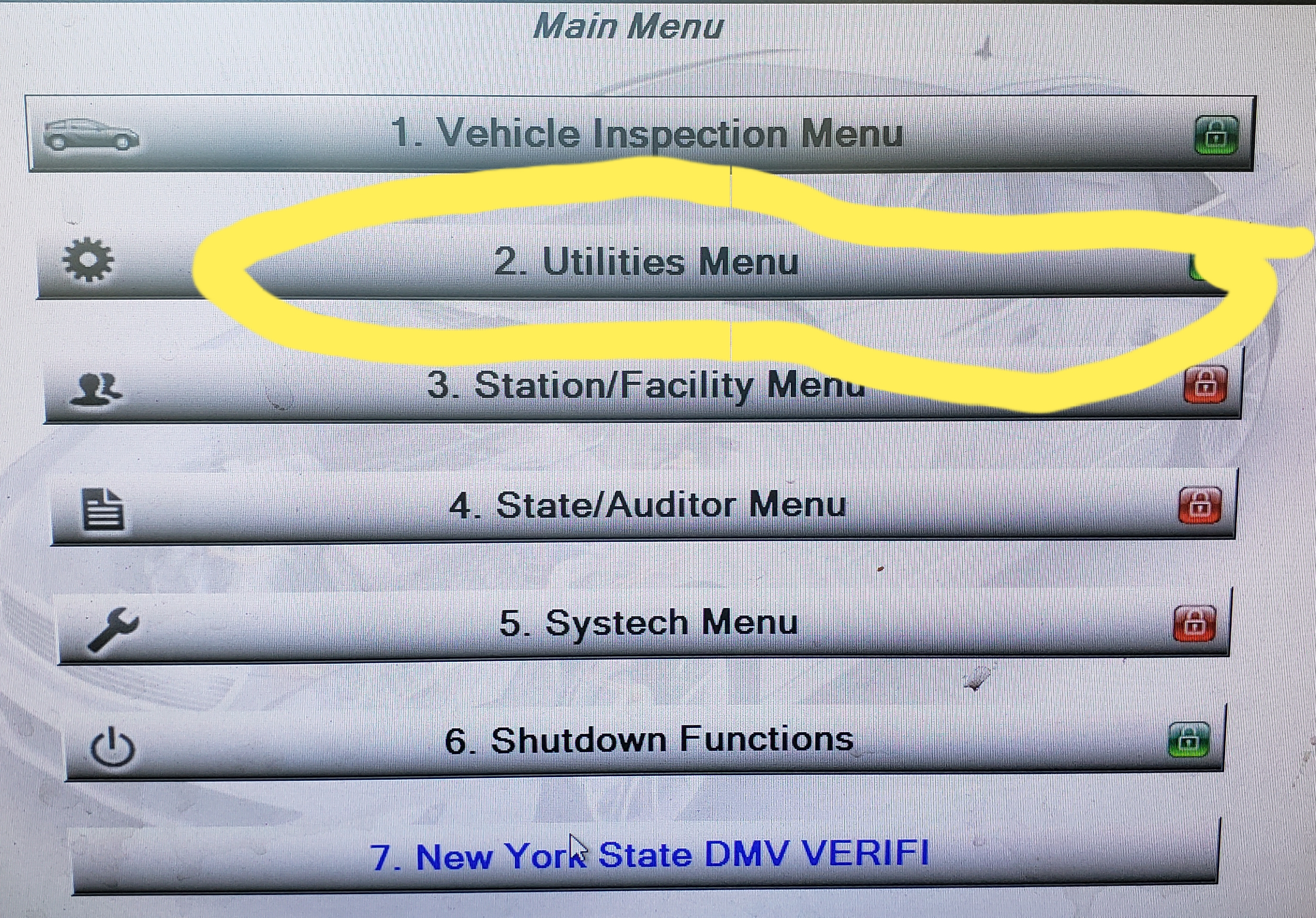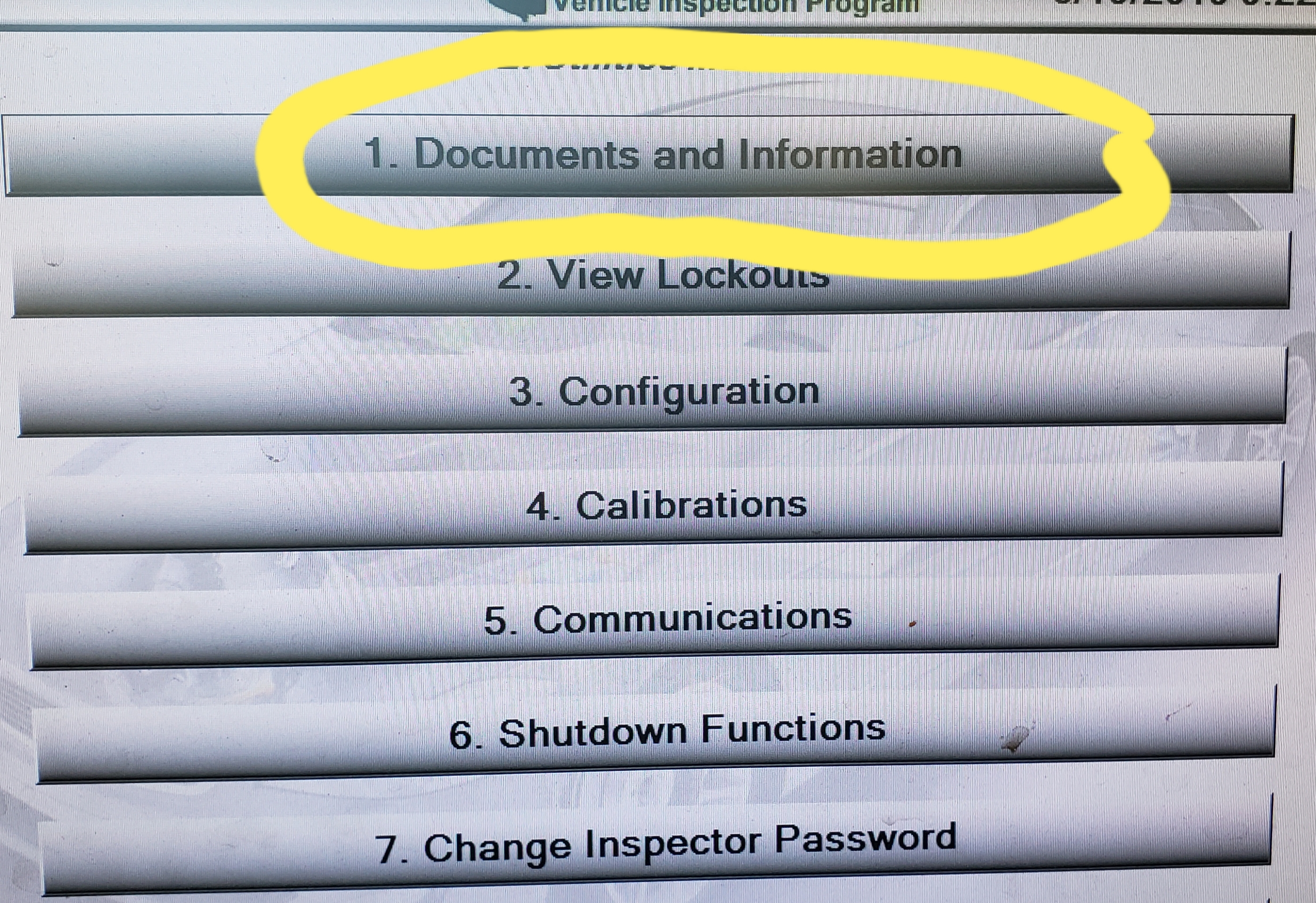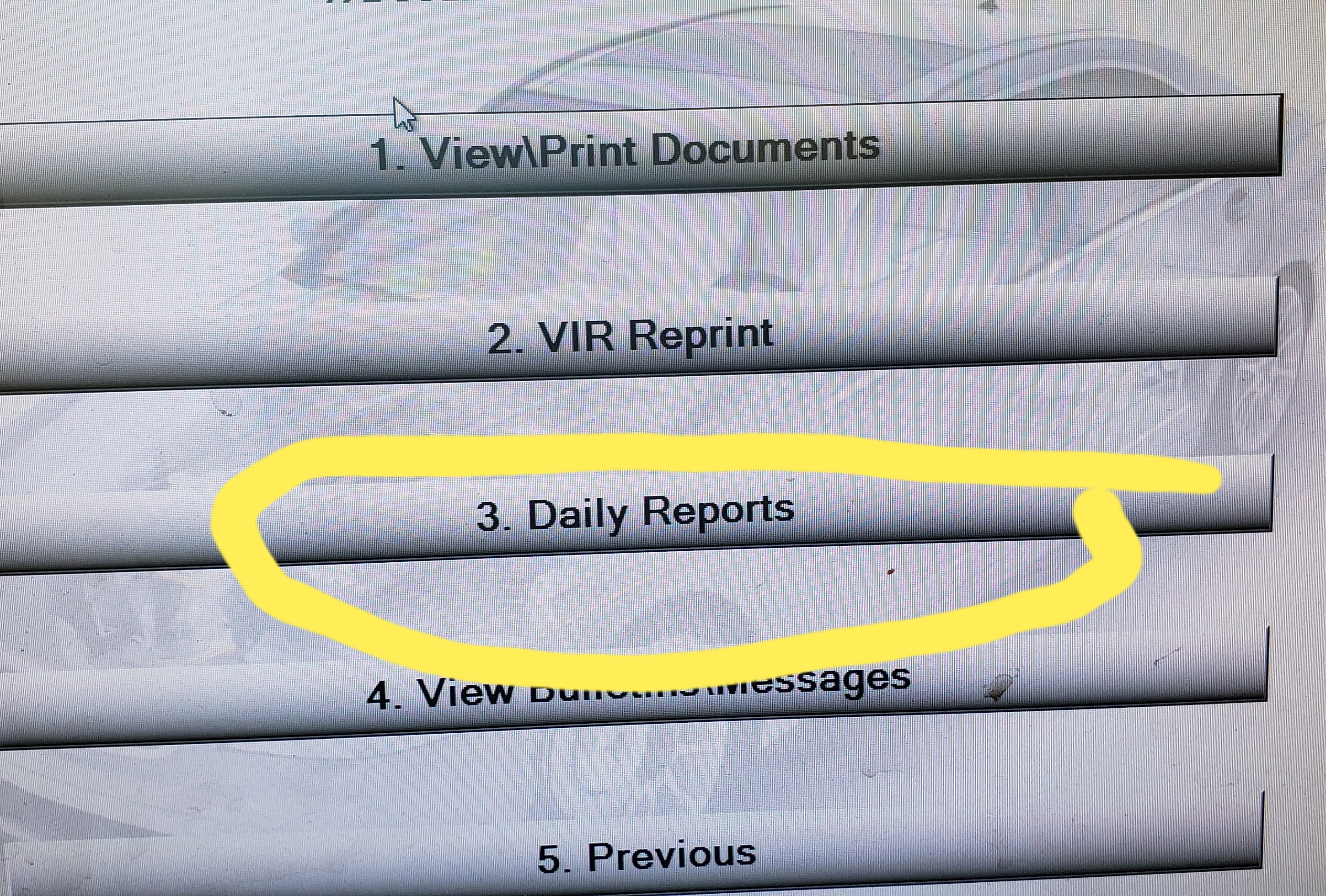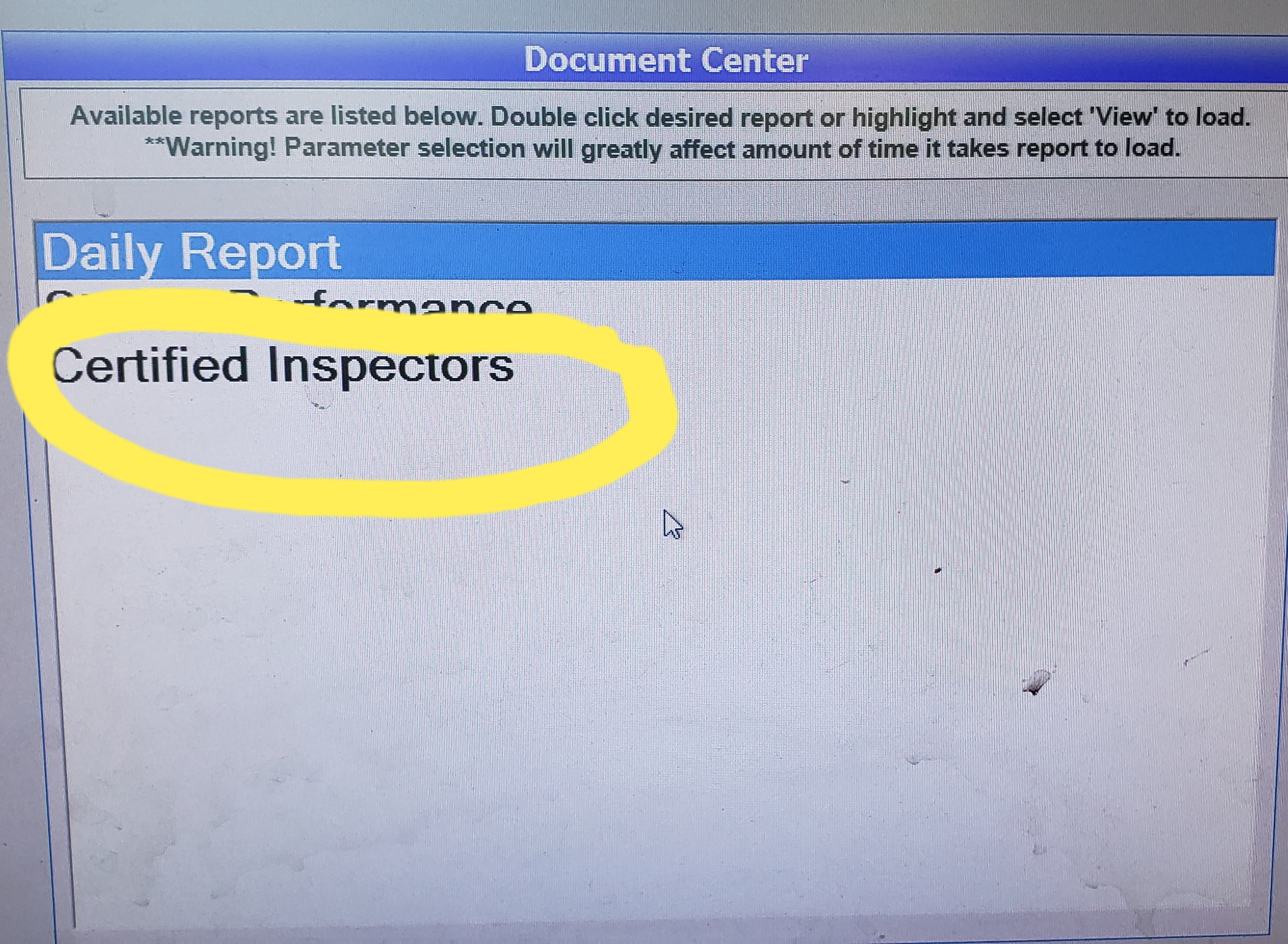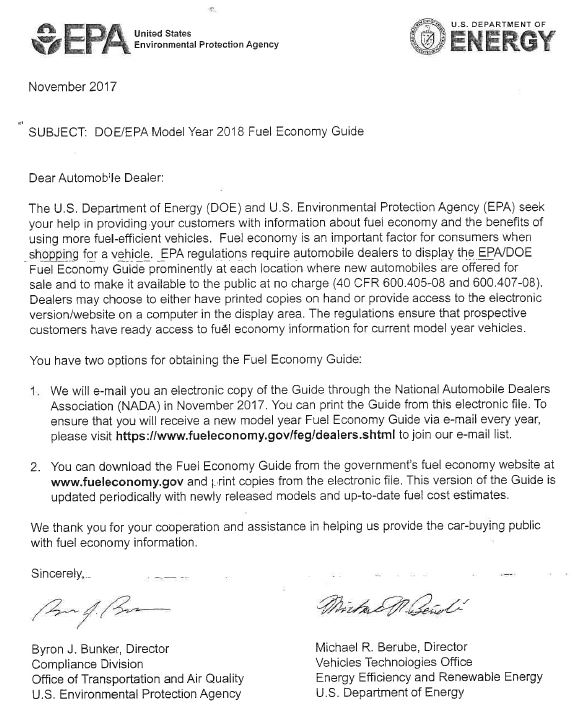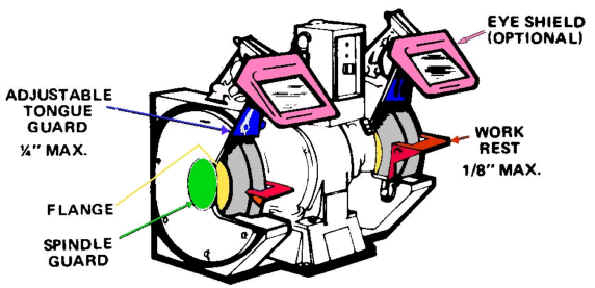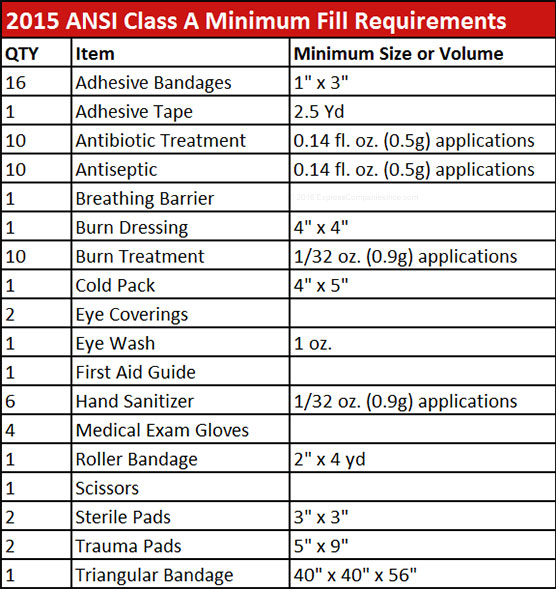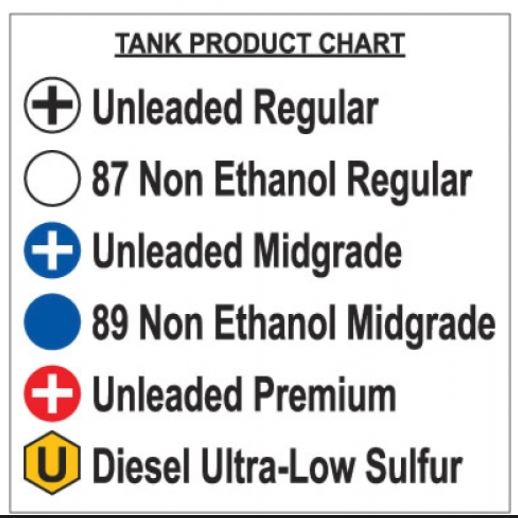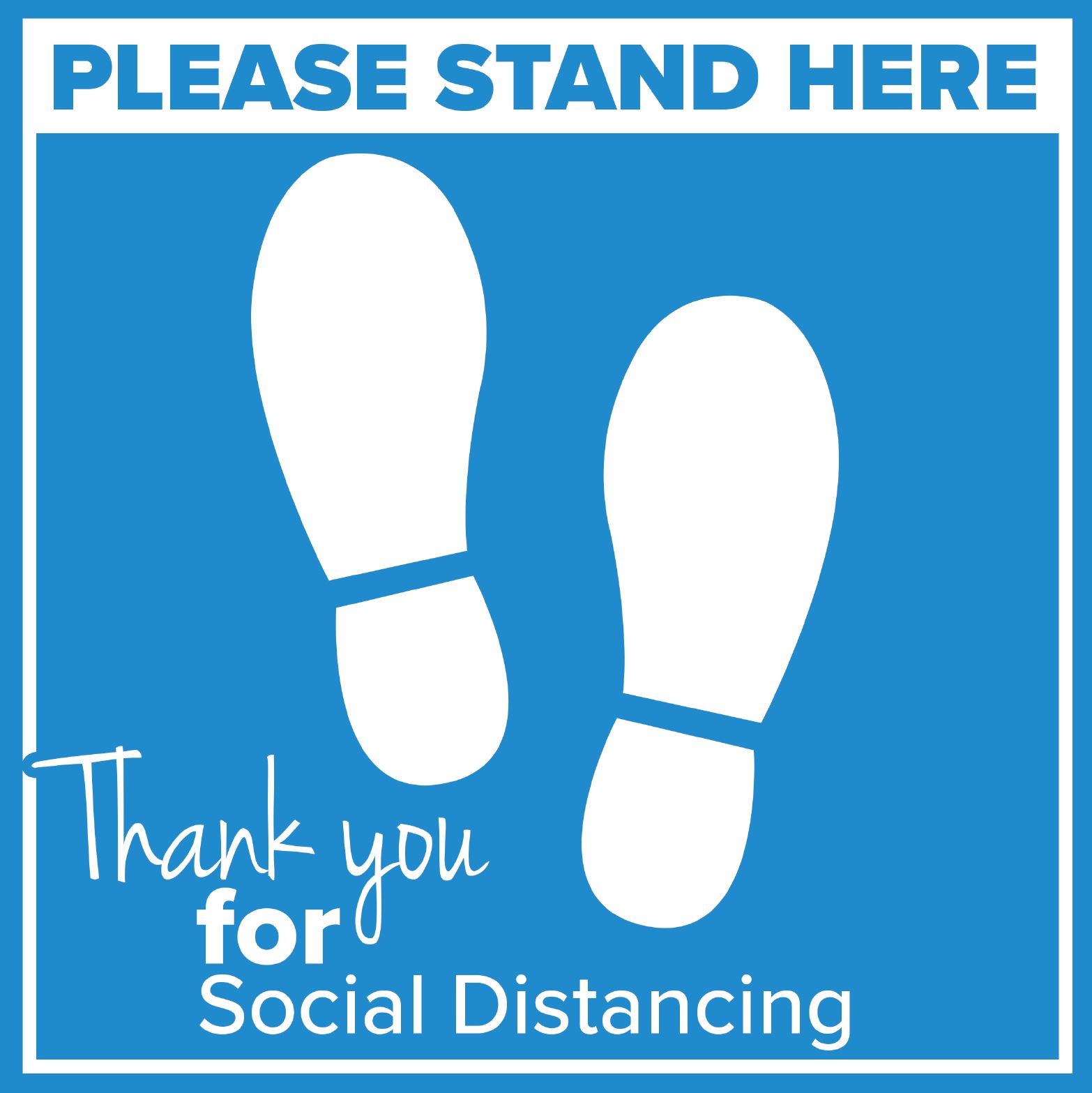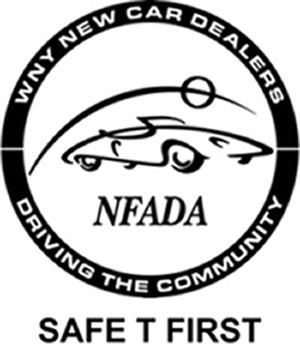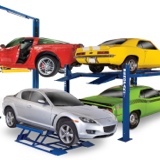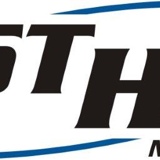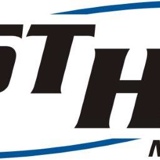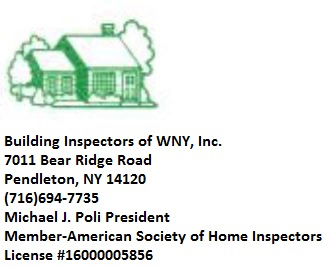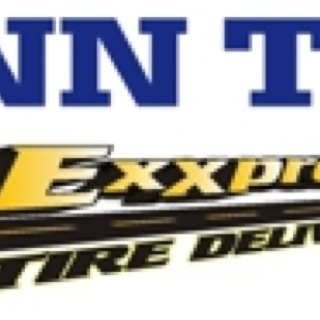Information
-
Conducted on
-
Dealer Contact/email
-
Prepared by
Program
-
Check for Program Audit
STF CD/Contents
-
Tab 1-STF Manual accessible to all
Tab 2-Training Records
-
Do you have training record attendance sheets
-
Do you have New Employee Orientation records (sign-off sheets) @ the Dealership or at your Corporate Office?
-
Do you have Safety Committee (managers,employees) that meets at least once a year?
-
Does at least one employee have current DOT Haz-Mat Certificate(s) (3yrs)
-
AC Certificate(s) for techs that do AC repairs<br>
-
Power Industrial Truck Operators License(s) (3yrs)
Tab 3-Audit/Inspection
-
Most recent safety inspection report
- Yes
- No
- N/A
- Reference
-
http://www.nfada.com/members_only/pdfs/MonthlyBuildingInspectin4-2019.pdf
Tab 4-Emgency Action/Fire Prevention
-
Do you have an Emergency Action Plan with Evacuation Maps, and is it posted in each department?
-
Do you conduct Fire Drills (annual)
-
Check if you have a Collision Center
Tab 5 Respiratory Protection Collision Shop
-
Medical Surveillance Evaluation (as required)
-
Respirator Training/Fit Test (annual)
Tab 6 Storage Tanks/DEC Inspection
-
Copy of petroleum bulk storage tank certificate
-
D.E.C Data Base https://www.dec.ny.gov/cfmx/extapps/derexternal/index.cfm?pageid=4
-
Monthly DEC AST inspection reports (3yrs)
- Yes
- No
- N/A
- Reference
-
http://www.nfada.com/members_only/pdfs/MonthlyTankInspection4-18_000.pdf
-
Underground Storage Tanks
-
Copy of A/B Operator Training (indicated on tank permit?)
-
Copy of Cathodic Test (annual)
-
Do you have 1320 gallons or more of petroleum bulk storage (includes 55 gallon drums)
-
Do you have a SPCC plan on file, is it current? (5yr review)
Tab 7-PPE (Assessment and Glove Testing on File)
-
Have you conducted PPE Hazard Assessment /Training (annual)
-
Service
-
Parts/Detail/Office
-
Collision
-
Hybrid Glove Tests (6 months)
Tab 8-Inspections (Inspection on File)
-
Monthly Building Inspections (12 months)
-
Fire Alarm Test Records (annual)
-
Automatic Sprinklers Inspection (annual)
-
Rolling Steel Fire Doors (annual drop test)
-
Lift Inspection Report (annual)
-
Forklift pre-operation inspection
-
Elevator Inspection (every 6 months)
Tab 9-Environmental Documentation
-
Waste Paint Pickup Manifests/Receipts
-
Parts Washer Solvent Pickup Manifests/Receipts
-
Oil/Water Separator Cleanout Receipts
Safety Data Sheets
-
SDS Binder
-
SDS Online
Tab 10-Additional Documentation
-
OSHA 300A/OSHA 301 (or equivalent) post 2/1-4/30
-
Comments
Postings
-
Check for Posting Audit
Dealer Signs
-
Yellow OFFICIAL INSPECTION STATION sign on outside of building? Form 110 (State)
-
State Regulation
-
Green Registered NYS MOTOR VEHICLE REPAIR SHOP sign on outside of building?
-
State Regulation
-
Does the dealership post an IDENTIFYING SIGN AT EVERY BUSSINESS LOCATION? (off premises bodyshop or showroom) (NYS DMV 78.26(b)) (State)
Service Write-up Area
-
Service-Write Area Please check one that apply
- Compliance Board Minus Child Seat Law
- Compliance Board Minus DEC PBS,Child Car Seat Law
- No Compliance Board
- Reference for labor rate
- Reference to Print NYS Inspectors
-
Is Compliance Board up to Date?
-
Does the dealership post a sign regarding CHILD SAFETY SEATS for rental vehicles stating "NYS law requires all children under age of 4 to be restrained in a federally approved child safety seat", as required by NYS DMV? (State)
-
Is the NYS Inspectors list up to date?
-
Is Compliance Board up to Date?
-
Does the dealership have NYS DEC permit displayed?
-
Does the dealership post a sign regarding CHILD SAFETY SEATS for rental vehicles stating "NYS law requires all children under age of 4 to be restrained in a federally approved child safety seat", as required by NYS DMV? (State)
-
Is the NYS Inspectors list up to date?
-
Does the dealership post on a sign at least 8 1/2 x 14 inches how its labor charge is computed? DMV(82.7c) (State)
-
Does the dealership have a Tax Certificate posted? DTF-17-A
-
Does the dealership have all required Business Certificates posted (MV dealer, MV inspection , MV repair shop)
-
Does the Dealership have a Official Indoor Repair Sign posted indoors, as required by NYS DMV (VS-47,82.7(a)) (State)
-
Does the dealership post a sign regarding Vehicle Inspection Violations, as required by NYS DMV? (VS140) State)
-
Does the dealership have an INSPECTION GROUPS AND FEE CHART sign posted as required NYS DMV? (VS-77) (State)
-
Is the NYS Inspectors list up to date?
-
Inspection Groups and Fee Chart
https://dmv.ny.gov/forms/vs77.pdf -
Does the dealership post the NYS WASTE TIRE MANAGEMENT FEE sign? (State)
-
Does the dealership have NYS DEC permit displayed?
-
Does the dealership post a sign stating " We Accept Used Oil For Recycling At No Charge" (State)
-
Does the dealership post a sign with "UNIVERSAL RECYCLING SYMBOL REGARDING VEHICLE BATTERY RECYCLING" stating " its illegal to discard vehicle batteries. State requires us to accept vehicle batteries at no charge for recycling" as required by NYS law? ( State)
-
Does the dealership post a sign regarding CHILD SAFETY SEATS for rental vehicles stating "NYS law requires all children under age of 4 to be restrained in a federally approved child safety seat", as required by NYS DMV? (State)
-
labor Rate
-
Main menu Step 1
-
Step 2
-
Step 3
-
Step 4
Collision
-
Check if you have a Collision Center
Estimating Area
-
Does the dealership post an official pink Appraisal Repair Shop sign?
-
Appraisal Sign
https://dmv.ny.gov/forms/vs47a.pdf -
Does the dealership post its labor rate specifying how it computes its LABOR CHARGE and is the sign at least 8.5x14 inches, as required by NYS law? NYS DMV (82.7c)
-
If the dealership operates an auto body shop and generates over 25 gallons of paint waste per month, is the facility properly registered?
-
Does each person who writes body shop estimates posses a VALID ESTIMATOR'S LICENSE, as required by NYS DMV?
-
Comments
Service Area
-
Are all ASTs/USTs properly labeled? (Waste - Purple Square) (State)
Required State and Federal HR Posters
NYS Posters
-
#1 Does the Dealership have The NYS Right to Know Poster posted as required by NYS.
- Yes
- Replaced (Missing Document)
- Updated Document
- Reference
- No
- Expired
-
Right to Know Poster
https://www.health.ny.gov/environmental/workplace/right_to_know/docs/rtk.pdf -
#2 Discrimination sign BASED ON AGE, RACE, CREED, COLOR, NATIONAL ORGIN, SEXUAL ORIENTATION, MILITARY STATUS, SEX, DISABILITY OR MARITAL STATUS IS PROHIBITED, as required by the NYS Division of Human Rights? (DOHR 1990)
- Yes
- Replaced (Missing Document)
- Updated Document
- Reference
- No
- Expired
-
Discrimination Poster
http://www.dhr.ny.gov/sites/default/files/doc/poster.pdf -
#3 Does the dealership post a sign regarding MINIMUM WAGE INFORMATION, as required by the NYS DOL? (LS207) Curent Rate PER HOUR.
- Yes
- Replaced (Missing Document)
- Updated Document
- Reference
- No
- Expired
-
Minimum Wage Poster NYS
https://www.labor.ny.gov/formsdocs/wp/LS207.pdf -
#4 Does the dealership post the NEW YORK CORRECTIONS Law Article 23-A?
- Yes
- Replaced (Missing Document)
- Updated Document
- Reference
- No
- Expired
-
NYS Corrections Laws
https://labor.ny.gov/formsdocs/wp/correction-law-article-23a.pdf -
#5 If the dealership employs minors, does it maintain and post a schedule of those MINOR EMPLOYEES' PERMISSIBLE WORK HOURS, LUNCH AND BREAKS, in accordance with the NYS DOL?
- Yes
- Replaced (Missing Document)
- Updated Document
- Reference
- No
- Expired
-
Minor Employee Law
https://labor.ny.gov/formsdocs/wp/LS171.pdf
Dealer Specific Posters
-
Does the dealership have the PAID FAMILY LEAVE FOR EMPLOYEES poster as required by NYS. (PFL120)
- Yes
- Replaced (Missing Document)
- Updated Document
- Reference
- No
- Expired
-
Paid Family Leave Poster
https://www.ny.gov/sites/ny.gov/files/atoms/files/PFL120_NoticeOfCompliance.pdf -
Does the dealership post a WORKERS' COMPENSATION NOTICE OF EMPLOYEE RIGHTS? (C-105)
- Yes
- Replaced (Missing Document)
- Updated Document
- Reference
- No
- Expired
-
Sample of Workers Compensation Notice of Employee a Rights Poster
http://www.nyc.gov/html/dcla/downloads/pdf/cdf_sample_workerscomp_c_105_2.pdf -
Does the dealership post a notice regarding DISABILITY RIGHTS, as required by NYS Disability Insurance Law? (DB-120)
- Yes
- Replaced (Missing Document)
- Updated Document
- Reference
- No
- Expired
-
Sample of Disability Rights Poster (need form)
-
Does the dealership post a Sexual Harassment Prevention Policy Notice? (optional)
- Yes
- Replace (Missing Document)
- Updated Document
- N/A
- Reference
- No
- Missing
-
Sample of Sexual Harassment Prevention Policy Notice
https://www.ny.gov/sites/ny.gov/files/atoms/files/sexualharassmentpreventionposter_English_handfill.pdf -
Does the dealership post a sign regarding UNEMPLOYMENT INSURANCE BENEFITS, as required by NYS DOL? (IA133)
- Yes
- Replaced (Missing Document)
- Updated Document
- Reference
- No
- Expired
-
Sample of Unemployment Insurance Poster
https://labor.ny.gov/workerprotection/publicwork/PDFs/unemployment_insurance[1][1].pdf
Federal Posters
-
#6 Does the dealership have the JOB SAFETY & HEALTH PROTECTION SIGN posted, as required by OSHA? (OSHA 2203)
- Yes
- Replaced (Missing Document)
- Updated Document
- Reference
- No
- Expired
-
OSHA Safety and Health IT'S THE LAW! Poster 8 1/2 x 14 approved
https://www.osha.gov/Publications/osha3165.pdf -
#7 Does the dealership have the FEDERAL MINIMUM WAGE SIGN posted, as required by the Labor Department? (Labor 1088)
- Yes
- Replaced (Missing Document)
- Updated Document
- Reference
- No
- Expired
-
Federal wage poster
https://www.dol.gov/whd/regs/compliance/posters/minwagep.pdf -
#8 Does the dealership have the EMPLOYEE POLYGRAPH PROTECTION ACT sign posted, as required by the Labor Department? (Labor 1462)
- Yes
- Replaced (Missing Document)
- Updated Document
- Reference
- No
- Expired
-
Employee Polygraph Protection Act Poster
https://www.dol.gov/whd/regs/compliance/posters/eppac.pdf -
#9 Does the dealership have a sign posted regarding the EQUAL EMPLOYMENT OPPORTUNITY LAW, as required by the Equal Employment Opportunity Commission? (EEOC 11/09)
- Yes
- Replaced (Missing Document)
- Updated Document
- Reference
- No
- Expired
-
Equal Employment Opportunity Law Poster
https://www.eeoc.gov/employers/upload/eeoc_self_print_poster.pdf -
#10 Does the dealership have the FAMILY AND MEDICAL LEAVE ACT requirements posted? (Department of Labor- over 50 employees within 75 miles)
- Yes
- Replaced (Missing Document)
- Updated Document
- Reference
- No
- Expired
-
Family and Medical Leave Act Poster
https://www.dol.gov/whd/regs/compliance/posters/fmlaen.pdf -
#12 Does the dealership post the UNIFORMED SERVICES EMPLOYMENT AND REEMPLOYMENT RIGHTS ACT (USERRA)?
- Yes
- Replaced (Missing Document)
- Updated Document
- Reference
- No
- Expired
-
Uniformed Services Employment and Reemployment Rights Act Poster.
http://www.dol.gov/vets/programs/userra/USERRA_Private.pdf
Showroom
-
Does the dealership post WARRANTY PROVISIONS ON USED CARS, as required by Federal Trade Commission?
-
Do the dealership's customers have access to EPA MILEAGE GUIDES, in the showroom, as required by EPA?
-
EPA mileage guide
https://fueleconomy.gov/feg/dealers.shtml
Showroom
-
Check the box if you have a Showroom
EXIT ROUTES (29 CFR 1910.37)
-
Are exits clearly marked with approved signs? (6"x3/4" letters)
-
If Battery Backup, does the sign illuminate when tested?
-
Emergency Lighting if equipped, Is it working?
-
Are the directions to exits, when not immediately apparent, marked by visible signs?
-
Are doors which could be confused with emergency exits marked "not an exit" or otherwise identified? <br>(29 CFR 1910.37)
-
Free of locks and easily opened (e.g. Crash Bars) to allow emergency egress from the building? (29 CFR 1910.36 (d) (1) and or (d) (2)
-
Is the path to exit and discharge free from obstruction?
-
If there is an elevation differential between exit doors and the ground, is there a "step down" or "step up" sign posted on the door? (29 CFR 1910.37)
-
Does the department have fire doors?
-
Fire door free from kick down stops?
-
Fire door fire rating label legible?
-
Fire door closed/positively latch?
-
Are there rolling fire doors present in department?
-
Rolling fire door path clear from obstructions?
-
Rolling fire door fusible link free from paint?
Fire Safety
-
Are Fire Extinguisher readily accessible, mounted, identified with signs and inspected every 30 days?
Floor
-
Are floor mats in place at all entrances?
-
Are they of sufficient length to accommodate at least 4 strides (2 steps for each foot)
ELECTRICAL SAFETY
-
Are electrical outlets or boxes secured with no openings? (29 CFR 1910.303 (b)(8)(i))
-
Are cords, wiring and plugs in good condition and grounded? (29 CFR 1010.303 (h)(3))
-
Does the department prohibit use of multiple plug adapters? (29 CFR 1910.303)
-
Does the department only use extension cords for temporary work? (max 90 days) (29 CFR 1910.305)
-
Are extension cords that are used for temporary work properly grounded with a three-prong plug? (29 CFR 1910.304 and 305)
- Yes
- No
- N/A
-
Does the department avoid daisy chaining extension cords/power strips?
-
Are ground fault circuit interrupters (GFCI) installed near electrical equipment which has the potential for contact with moisture? (29 CFR 1910.394)
-
Is there a circuit panel box in this department?
-
Are all circuits labeled properly? (29 CFR 1910.303)
-
Is there 3 feet of clerance around circuit panel boxes?
-
Are all spaces in panel filled with breakers or blanks?
Miscellaneous
-
General housekeeping
-
Do you have any other actions that need to be addressed in this department?
Other Location
-
Check the box if you have a Other Location
-
Location Name
EXIT ROUTES (29 CFR 1910.37)
-
Are exits clearly marked with approved signs? (6"x3/4" letters)
-
If Battery Backup, does the sign illuminate when tested?
-
Emergency Lighting if equipped, Is it working?
-
Are the directions to exits, when not immediately apparent, marked by visible signs?
-
Are doors which could be confused with emergency exits marked "not an exit" or otherwise identified? <br>(29 CFR 1910.37)
-
Free of locks and easily opened (e.g. Crash Bars) to allow emergency egress from the building? (29 CFR 1910.36 (d) (1) and or (d) (2)
-
Is the path to exit and discharge free from obstruction?
-
If there is an elevation differential between exit doors and the ground, is there a "step down" or "step up" sign posted on the door? (29 CFR 1910.37)
-
Does the department have fire doors?
-
Fire door free from kick down stops?
-
Fire door fire rating label legible?
-
Fire door closed/positively latch?
-
Are there rolling fire doors present in department?
-
Rolling fire door path clear from obstructions?
-
Rolling fire door fusible link free from paint?
Fire Safety
-
Are Fire Extinguisher readily accessible, mounted, identified with signs and inspected every 30 days?
Floor
-
Are floor mats in place at all entrances?
-
Are they of sufficient length to accommodate at least 4 strides (2 steps for each foot)
ELECTRICAL SAFETY
-
Are electrical outlets or boxes secured with no openings? (29 CFR 1910.303 (b)(8)(i))
-
Are cords, wiring and plugs in good condition and grounded? (29 CFR 1010.303 (h)(3))
-
Does the department prohibit use of multiple plug adapters? (29 CFR 1910.303)
-
Does the department only use extension cords for temporary work? (29 CFR 1910.305)
-
Are extension cords that are used for temporary work properly grounded with a three-prong plug? (29 CFR 1910.304 and 305)
-
Does the department avoid daisy chaining extension cords/power strips?
-
Are ground fault circuit interrupters (GFCI) installed near electrical equipment which has the potential for contact with moisture? (29 CFR 1910.394)
-
Is there a circuit panel box in this department?
-
Are all circuits labeled properly? (29 CFR 1910.303)
-
Is there 3 feet of clerance around circuit panel boxes?
-
Are all spaces in panel filled with breakers or blanks?
Miscellaneous
-
General housekeeping
-
Do you have any other actions that need to be addressed in this department?
-
Office
-
Check the box if you have an Office
EXIT ROUTES (29 CFR 1910.37)
-
Are exits clearly marked with approved signs? (6"x3/4" letters)
-
If Battery Backup, does the sign illuminate when tested?
-
Emergency Lighting if equipped, is it working?
-
Are the directions to exits, when not immediately apparent, marked by visible signs?
-
Are doors which could be confused with emergency exits marked "not an exit" or otherwise identified? <br>(29 CFR 1910.37)
-
Free of locks and easily opened (e.g. Crash Bars) to allow emergency egress from the building? (29 CFR 1910.36 (d) (1) and or (d) (2)
-
Is the path to exit and discharge free from obstruction?
-
If there is an elevation differential between exit doors and the ground, is there a "step down" or "step up" sign posted on the door? (29 CFR 1910.37)
-
Does the department have fire doors?
-
Fire door free from kick down stops?
-
Fire door fire rating label legible?
-
Fire door closed/positively latch?
-
Are floor mats in place at all entrances?
-
Are they of sufficient length to accommodate at least 4 strides (2 steps for each foot)
-
Are there rolling fire doors present in department?
-
Rolling fire door path clear from obstructions?
-
Rolling fire door fusible link free from paint?
Fire Safety
-
Are Fire Extinguisher readily accessible, mounted, identified with signs and inspected every 30 days?
ELECTRICAL SAFETY
-
Are electrical outlets or boxes secured with no openings? (29 CFR 1910.303 (b)(8)(i))
-
Are cords, wiring and plugs in good condition and grounded? (29 CFR 1010.303 (h)(3))
-
Does the department prohibit use of multiple plug adapters? (29 CFR 1910.303)
-
Does the department only use extension cords for temporary work? (29 CFR 1910.305)
-
Are extension cords that are used for temporary work properly grounded with a three-prong plug? (29 CFR 1910.304 and 305)
-
Are ground fault circuit interrupters (GFCI) installed near electrical equipment which has the potential for contact with moisture? (29 CFR 1910.394)
-
Does the department avoid daisy chaining extension cords/power strips?
-
Does the department avoid taping flexible cords which are frayed or missing insulation? (29 CFR 1910.305)
-
Is there a circuit panel box in this department?
-
Are all circuits labeled properly? (29 CFR 1910.303)
-
Is there 3 feet of clerance around circuit panel boxes?
-
Are all spaces in panel filled with breakers or blanks?
Miscellaneous
-
General housekeeping
-
Do you have any other actions that need to be addressed in this department?
Service Writeup/Drive-lane
-
Check the box if you have a Service Writeup/Drive-lane
EXIT ROUTES (29 CFR 1910.37)
-
Are exits clearly marked with approved signs? (6"x3/4" letters)
-
If Battery Backup, does the sign illuminate when tested?
-
Emergency Lighting if equipped, Is it working?
-
Are the directions to exits, when not immediately apparent, marked by visible signs?
-
Are doors which could be confused with emergency exits marked "not an exit" or otherwise identified? <br>(29 CFR 1910.37)
-
Free of locks and easily opened (e.g. Crash Bars) to allow emergency egress from the building? (29 CFR 1910.36 (d) (1) and or (d) (2)
-
Is the path to exit and discharge free from obstruction?
-
If there is an elevation differential between exit doors and the ground, is there a "step down" or "step up" sign posted on the door? (29 CFR 1910.37)
-
Does the department have fire doors?
-
Fire door free from kick down stops?
-
Fire door fire rating label legible?
-
Fire door closed/positively latch?
-
Are floor mats in place at all entrances?
-
Are they of sufficient length to accommodate at least 4 strides (2 steps for each foot)
-
Are there rolling fire doors present in department?
-
Rolling fire door path clear from obstructions?
-
Rolling fire door fusible link free from paint?
Fire
-
Are Fire Extinguisher readily accessible, mounted, identified with signs and inspected every 30 days?
ELECTRICAL SAFETY
-
Are electrical outlets or boxes secured with no openings? (29 CFR 1910.303 (b)(8)(i))
- Yes
- No
- N/A
-
Are cords, wiring and plugs in good condition and grounded? (29 CFR 1010.303 (h)(3))
-
Does the department prohibit use of multiple plug adapters? (29 CFR 1910.303)
-
Does the department only use extension cords for temporary work? (max 90 days) (29 CFR 1910.305)
-
Are extension cords that are used for temporary work properly grounded with a three-prong plug? (29 CFR 1910.304 and 305)
-
Are ground fault interrupters (GFCI's) installed near electrical equipment which has the potential for contact with moisture? (29 CFR 1910.394)
-
Does the department avoid daisy chaining extension cords/power strips?
-
Does the department avoid taping flexible cords which are frayed or missing insulation? (29 CFR 1910.305)
-
Is there a circuit panel box in this department?
-
Are all Panels Labeled properly? (29 CFR 1910.303)
-
Is there 3 feet of clerance around circuit panel boxes?
-
Are all spaces in panel filled with breakers or blanks?
Miscellaneous
-
General housekeeping
-
Do you have any other actions that need to be addressed in this department?
Service Department
-
Check the box if you have a Service Department
EXIT ROUTES (29 CFR 1910.37)
-
Are exits clearly marked with approved signs? (6"x3/4" letters)
-
If Battery Backup, does the sign illuminate when tested?
-
Emergency Lighting if equipped, Is it working?
-
Are the directions to exits, when not immediately apparent, marked by visible signs?
-
Are doors which could be confused with emergency exits marked "not an exit" or otherwise identified? <br>(29 CFR 1910.37)
-
Free of locks and easily opened (e.g. Crash Bars) to allow emergency egress from the building? (29 CFR 1910.36 (d) (1) and or (d) (2)
-
Is the path to exit and discharge free from obstruction?
-
If there is an elevation differential between exit doors and the ground, is there a "step down" or "step up" sign posted on the door? (29 CFR 1910.37)
-
Does the department have fire doors?
-
Fire door free from kick down stops?
-
Fire door fire rating label legible?
-
Fire door closed/positively latched?
-
Are floor mats in place at all entrances?
-
Are they of sufficient length to accommodate at least 4 strides (2 steps for each foot)
-
Are there rolling fire doors present in department?
-
Rolling fire door path clear from obstructions?
-
Rolling fire door fusible link free from paint?
FIRE SAFETY
-
Are Fire Extinguisher readily accessible, mounted, identified with signs and inspected every 30 days?
-
Is there a "no smoking" sign posted on all portable battery chargers? (29 CFR 1910.178 (g) (10)
-
Will covers for flammable parts cleaning tanks (dip tanks, parts washer tanks) close automatically in a fire? if they are non flammable, please mark N/A (29 CFR 1910.108)
-
Are open flames and spark-producing equipment such as bench grinders kept away from flammable dip tanks? (29 CFR 1910.38)
-
Are oily, used rags properly stored in closed, non-flammable containers and properly disposed of or recycled by a laundry service? (DEC; fire regulaions)
-
Is gasoline stored in a approved metal safety can and properly labeled? (gasoline/flammable)
ELECTRICAL SAFETY
-
Are electrical outlets or boxes secured with no openings? (29 CFR 1910.303 (b)(8)(i))
- Yes
- No
- N/A
-
Are cords, wiring and plugs in good condition and grounded? (29 CFR 1010.303 (h)(3))
-
Does the department prohibit use of multiple plug adapters? (29 CFR 1910.303)
-
Does the department only use extension cords for temporary work? (max 90 days) (29 CFR 1910.305)
-
Are extension cords that are used for temporary work properly grounded with a three-prong plug? (29 CFR 1910.304 and 305)
-
Are ground circuit fault interrupters (GFICI's) installed near electrical equipment which has the potential for contact with moisture? (29 CFR 1910.394)
-
Does the department avoid daisy chaining extension cords/power strips?
-
Does the department avoid taping flexible cords which are frayed or missing insulation? (29 CFR 1910.305)
-
Is there a circuit panel box in this department?
-
Are all circuits labeled properly? (29 CFR 1910.303)
-
Is there 3 feet of clerance around circuit panel boxes?
-
Are all spaces in panel filled with breakers or blanks?
PHYSICAL, SANITATION & HEALTH HAZARDS
-
Does the department prohibit the use of food preparation equipment (microwaves, coffee pots, toasters)?
-
Osha Standard1910.141(g)(2)
https://www.osha.gov/laws-regs/regulations/standardnumber/1910/1910.141 -
Standard Intepreatation
https://www.osha.gov/laws-regs/standardinterpretations/2009-12-03 -
Is food waste removed so to eliminate health hazards? (29 CFR 1910.141)
-
Does the department properly maintain and use the exhaust system to prevent the build-up of exhaust? (29 CFR 1910.1000)
-
Are all drain grates/floor openings (exhaust holes) in good condition? (29 CFR 1910.23)
-
If the dealership has open pits, does it have guards or rails around the open pit? (29 CFR 1910.22)
-
Are spilled materials cleaned up immediately?
-
Are the floors as dry as possible? (29 CFR 1910.22 (a)(2)
-
Are any fans that are within seven feet of floor totally enclosed? (29 CFR 1910.212)
-
Does the department maintain work areas and aisles free from trip hazards? (29 CFR 1910.176)
-
Are lights which may be hit, encased in protective shields or otherwise guarded to prevent breakage? (29 CFR 1910.303)
-
If the dealership conducts chemical rust proofing, does it provide proper ventilation and isolation from other areas/workers (curtain)? (29 CFR 1910.107)
-
Are bathrooms kept in a sanitary condition? (29 CFR 1910.141)
-
Are all containers of hazardous chemicals properly (29CFR 1910.1200 (f) (5) (i) )<br>Secondary units must be identified with the GHS label.
-
If employees use compressed air for cleaning parts or equipment, do they reduce compressed air to less than 30 PSI for cleaning parts or equipment? <br>NOTE; Compressed air should not be used to clean clothing, (29 CFR 1910.242)
-
Are shop reels installed or are hoses properly stored and kept out of aisles when not in use?
-
Are air hoses in good condition and not repaired with hose clamps, but with proper repair kit?<br>Air hose repair kit are available from NFADA or NAPA
-
(29 CFR 11910.243(b)(2) air hose. Hose and hose connections used for conducting compressed air to utilization equipment shall be designed for the pressure and service to which they are subjected.
Repair kit available NFADA (631-8510) part numbers 1699020002/1699021001 -
PERSONAL PROTECTIVE EQUIPMENT AND FIRST AID
-
Does the department provide personal protective equipment (e.g., googles, face shields, gloves, hearing protection) to all employees and is it kept in sanitary condition? (29 CFR 1910.132 (e))
-
Are eyewash units located within 55 feet of a potential hazard, and/or installed within 10 seconds of a hazard providing 15 minutes of a continuous flow of water? (29 CFR 1910.151 and ANSI Z358.1-2014)<br>
-
Does unit have unobstructed travel path?
-
Type of unit?
-
Is the unit full, clean, accessible, fluid changed when required by Manufacturer and documented?
-
Is clean, accessible and flushed weekly?<br>Water temp 60-100 degrees
GAS CYLINDERS/TORCHES
-
Do torches have a Flashback Arrestor (i.e., flash guard, or check valve)? (29 CFR 1910.253)
-
sample of Flashback Arrestor
https://static1.squarespace.com/static/510dbdc1e4b037c811a42c5a/t/548f3f3ae4b0273e692911dd/1418673982449/ -
Are they chained to a cart when moved? (29 CFR 1910.253(b) (2) (ii))
-
Are cylinders legibly marked? (29 CFR 1910.101)
-
Are torch gauges in good working condition?
-
Do the cylinders: (1) require a special wrench for each acetylene cylinder in order to quickly turn it off in event of an emergency, and (2) keep one on each cylinder? (29 CFR 1910.252)
-
Does the dealership store extra gas cylinders on-site
-
If the dealership stores extra gas cylinders on-site, do they meet all the following standards:
-
Chaining gas cylinders to a stationary object when they are not in use. (29 CFR 1910.253 (b) (2) (ii) )<br>
-
Storing them away from elevators, stairs, doors, doorways or anywhere they could be knocked over or damaged (falling objects)? (29 CFR 1910.253 (b) (2) (ii) )
-
Storing oxygen away from flammables (oil, grease or fuel gas) by at least 20 feet. (29 CFR 1910.253 (b) (4) (i) )
-
Store extra oxygen and acetylene gas cylinders at least 20 feet apart from one another (unless separated by non-combustible barrier at least 5 feet high? (29 CFR 1910.253)
MACHINES & EQUIPMENT
-
Does the dealership have a bench grinder?
-
OSHA website for reference
https://www.osha.gov/SLTC/machineguarding/new-grinder-checklist.html -
Bench Grinder
-
Is there a properly aligned and fastened with a tongue guard adjusted to within 1/4 inch of wheel, for each abrasive wheel of bench grinder?
-
Do you have a tool rest (i.e. work rest) for each abrasive wheel, and is each tool rest no more than 1/8 inch from each wheel?
-
Is each bench grinder properly grounded with a three prong plug?
-
Is each bench grinder securely attached and stable?
-
Does the department post a sign requiring employees to wear goggles or face shields when grinding, and supply this PPE to ensure adequate face protection? (29 CFR 1910.215) <br>Note: if wearing face shield safety glasses are still required!
-
Does each jack or jack stand have its load rating legibly displayed? (29 CFR 1910.244 (a) (1) (ii))
-
After raising load, do employees use safety precautions to prevent slippage using a chain or strap? (29 CFR 1910.244 (a) (2) (iii))
-
Are safety devices on lifts in working condition and is the lift mechanism free of tampering? (Reference ALI and OSHA 5 (a)(1) General duty clause)
-
Do all lifts include, the manufacturer's name, model, serial number and load rate?
Miscellaneous
-
General housekeeping
-
Do you have any other actions that need to be addressed in this department?
Secondary Service Shop
-
Check the box if you have a Secondary Service Shop
EXIT ROUTES (29 CFR 1910.37)
-
Are exits clearly marked with approved signs? (6"x3/4" letters)
-
If Battery Backup, does the sign illuminate when tested?
-
Emergency Lighting if equipped, Is it working?
-
Are the directions to exits, when not immediately apparent, marked by visible signs?
-
Are doors which could be confused with emergency exits marked "not an exit" or otherwise identified? <br>(29 CFR 1910.37)
-
Free of locks and easily opened (e.g. Crash Bars) to allow emergency egress from the building? (29 CFR 1910.36 (d) (1) and or (d) (2)
-
Is the path to exit and discharge free from obstruction?
-
If there is an elevation differential between exit doors and the ground, is there a "step down" or "step up" sign posted on the door? (29 CFR 1910.37)
-
Does the department have fire doors?
-
Fire door free from kick down stops?
-
Fire door fire rating label legible?
-
Fire door closed/positively latch?
-
Are there rolling fire doors present in department?
-
Rolling fire door path clear from obstructions?
-
Rolling fire door fusible link free from paint?
FIRE SAFETY
-
Are Fire Extinguisher readily accessible, mounted, identified with signs and inspected every 30 days?
-
Is there a "no smoking" sign posted on all portable battery chargers? (29 CFR 1910.178 (g) (10)
-
Will covers for flammable parts cleaning tanks (dip tanks, parts washer tanks) close automatically in a fire? if they are non flammable, please mark N/A (29 CFR 1910.108)
-
Are open flames and spark-producing equipment such as bench grinders kept away from flammable dip tanks? (29 CFR 1910.38)
-
Are oily, used rags properly stored in closed, non-flammable containers and properly disposed of or recycled by a laundry service? (DEC; fire regulaions)
-
Is gasoline stored in a approved metal safety can and properly labeled? (gasoline/flammable)
ELECTRICAL SAFETY
-
Are electrical outlets or boxes secured with no openings? (29 CFR 1910.303 (b)(8)(i))
- Yes
- No
- N/A
-
Are cords, wiring and plugs in good condition and grounded? (29 CFR 1010.303 (h)(3))
-
Does the department avoid taping flexible cords which are frayed or missing insulation? (29 CFR 1910.305)
-
Does the department prohibit use of multiple plug adapters? (29 CFR 1910.303)
-
Does the department only use extension cords for temporary work? (max 90 days) (29 CFR 1910.305)
-
Are extension cords that are used for temporary work properly grounded with a three-prong plug? (29 CFR 1910.304 and 305)
-
Are ground circuit fault interrupters (GFICI's) installed near electrical equipment which has the potential for contact with moisture? (29 CFR 1910.394)
-
Does the department avoid daisy chaining extension cords/power strips?
-
Is there a circuit panel box in this department?
-
Are all circuits labeled properly? (29 CFR 1910.303)
-
Is there 3 feet of clerance around circuit panel boxes?
-
Are all spaces in panel filled with breakers or blanks?
PHYSICAL, SANITATION & HEALTH HAZARDS
-
Does the department prohibit the use of food preparation equipment (microwaves,coffee pots,toasters)?
-
Does the department properly maintain and use the exhaust system to prevent the build-up of exhaust? (29 CFR 1910.1000)
-
Are all exhaust holes or floor openings covered? (29 CFR 1910.23)
-
If the dealership has open pits, does it have guards or rails around the open pit? (29 CFR 1910.22)
-
Are spilled materials cleaned up immediately ?
-
Are the floors as dry as possible? (29 CFR 1910.22 (a)(2)
-
Are any fans that are within seven feet of floor totally enclosed? (29 CFR 1910.212)
-
Does the department maintain work areas and aisles free from trip hazards? (29 CFR 1910.176)
-
Is residue and debris disposed of a timely manner? (29 CFR 1910.22)
-
Are lights which may be hit, encased in protective shields or otherwise guarded to prevent breakage? (29 CFR 1910.303)
-
If the dealership conducts chemical rust proofing, does it provide proper ventilation and isolation from other areas/workers (curtain)? (29 CFR 1910.107)
-
Is food waste removed so to eliminate health hazards? (29 CFR 1910.141)
-
Are bathrooms kept in a sanitary condition? (29 CFR 1910.141)
-
Are all containers of hazardous chemicals properly (29CFR 1910.1200 (f) (5) (i) )<br>Secondary units must be identified with name of product and target organ, and hazard warning
-
If employees use compressed air for cleaning parts or equipment, do they reduce compressed air to less than 30 PSI dor cleaning parts or equipment? <br>NOTE; Compressed air should not be used to clean clothing, (29 CFR 1910.242)
-
Are shop reels installed and properly positioned to keep cords and hoses off the shop floors?
-
Are air hoses in good condition and not repaired with hose clamps,but with proper repair kit?<br>Air hose repair kit are available from NFADA or NAPA
-
(29 CFR 11910.243(b)(2) air hose. Hose and hose connections used for conducting compressed air to utilization equipment shall be designed for the pressure and service to which they are subjected.
Repair kit available NFADA (631-8510) part numbers 1699020002/1699021001 -
PERSONAL PROTECTIVE EQUIPMENT AND FIRST AID
-
Does the department provide personal protective equipment (e.g., googles,face shields gloves,hearing protection) to all employees and is it kept in sanitary condition? (29 CFR 1910.132 (e))
-
Are eyewash units located within 55 feet of a potential hazard site, and/or installed within 10 seconds of a hazard providing 15 minutes of a continuous flow of water? (29 CFR 1910.151 and ANSI Z358.1-2009))<br>
-
Does unit have unobstructed travel path?
-
Type of unit?
-
Is the unit full, clean, accessible, fluid changed when required by manufacturer and documented?
-
Is clean, accessible and flushed weekly?<br>Water temp 60-100 degrees
GAS CYLINDERS/TORCHES
-
Do torches have a Flashback Arrestor (i.e., flash guard, or check valve)? (29 CFR 1910.253)
-
sample of Flashback Arrestor
https://static1.squarespace.com/static/510dbdc1e4b037c811a42c5a/t/548f3f3ae4b0273e692911dd/1418673982449/ -
Are they chained to a cart when moved? (29 CFR 1910.253(b) (2) (ii))
-
Are cylinders legibly marked? (29 CFR 1910.101)
-
Are torch gauges in good working condition?
-
Do the cylinders: (1) require a special wrench for each acetylene cylinder in order to quickly turn it off in event of an emergency, and (2) keep one on each cylinder? (29 CFR 1910.252)
-
Does the dealership store extra gas cylinders on-site
-
If the dealership stores extra gas cylinders on-site, do they meet all the following standards:
-
Chaining gas cylinders to a stationary object when they are not in use. (29 CFR 1910.253 (b) (2) (ii) )<br>
-
Storing them away from elevators, stairs, doors, doorways or anywhere they could be knocked over or damaged (falling objects)? (29 CFR 1910.253 (b) (2) (ii) )
-
Storing them away from flammables (oil, grease, or fuel gas) by at least 20 feet. (29 CFR 1910.253 (b) (4) (i) )
-
Store extra oxygen and acetylene gas cylinders at least 20 feet apart from one another (unless separated by non-combustible barrier at least 5 feet high? (29 CFR 1910.253)
MACHINES & EQUIPMENT
-
Does the dealership have bench grinder?
-
OSHA website for reference
https://www.osha.gov/SLTC/machineguarding/new-grinder-checklist.html -
Bench Grinder
-
Is there a properly aligned and fastened with a tongue guard adjusted to within 1/4 inch of wheel, for each abrasive wheel of bench grinder?
-
Do you have a tool rest (i.e. work rest) for each abrasive wheel, and is each tool rest no more than 1/8 inch from each wheel?
-
Is each bench grinder properly grounded with a three prong plug?
-
Is each bench grinder securely attached and stable?
-
Does the department post a sign requiring employees to wear goggles or face shields when grinding, and supply this PPE to ensure adequate face protection? (29 CFR 1910.215) <br>Note: if wearing face shield safety glasses are still required!
-
Does each jack or jack stand have its load rating legibly displayed? (29 CFR 1910.244 (a) (1) (ii))
-
After raising load, do employees use safety precautions to prevent slippage using a chain or strap? (29 CFR 1910.244 (a) (2) (iii))
-
Are safety devices on lifts in working condition and is the lift mechanism free of tampering? (Reference ALI and OSHA 5 (a),(1) General duty clause)
-
Do all lifts include, the manufacturer's name, model, serial number and load rate?
Miscellaneous
-
General housekeeping
-
Do you have any other actions that need to be addressed in this department?
QuickLane Shop
-
Check the box if you have a Quicklane Shop
EXIT ROUTES (29 CFR 1910.37)
-
Are exits clearly marked with approved signs? (6"x3/4" letters
-
If Battery Backup, does the sign illuminate when tested?
-
Emergency Lighting if equipped, Is it working?
-
Are the directions to exits, when not immediately apparent, marked by visible signs?
-
Are doors which could be confused with emergency exits marked "not an exit" or otherwise identified? <br>(29 CFR 1910.37)
-
Free of locks and easily opened (e.g. Crash Bars) to allow emergency egress from the building? (29 CFR 1910.36 (d) (1) and or (d) (2)
-
Is the path to exit and discharge free from obstruction?
-
If there is an elevation differential between exit doors and the ground, is there a "step down" or "step up" sign posted on the door? (29 CFR 1910.37)
-
Does the department have fire doors?
-
Fire door free from kick down stops?
-
Fire door fire rating label legible?
-
Fire door closed/positively latch?
-
Are there rolling fire doors present in department?
-
Rolling fire door path clear from obstructions?
-
Rolling fire door fusible link free from paint?
FIRE SAFETY
-
Are Fire Extinguisher readily accessible, mounted, identified with signs and inspected every 30 days?
-
Is there a "no smoking" sign posted on all portable battery chargers? (29 CFR 1910.178 (g) (10)
-
Will covers for flammable parts cleaning tanks (dip tanks, parts washer tanks) close automatically in a fire? if they are non flammable, please mark N/A (29 CFR 1910.108)
-
Are open flames and spark-producing equipment such as bench grinders kept away from flammable dip tanks? (29 CFR 1910.38)
-
Are oily, used rags properly stored in closed, non-flammable containers and properly disposed of or recycled by a laundry service? (DEC; fire regulaions)
-
Is gasoline stored in a approved metal safety can and properly labeled? (gasoline/flammable)
ELECTRICAL SAFETY
-
Are electrical outlets or boxes secured with no openings? (29 CFR 1910.303 (b)(8)(i))
-
Are cords, wiring and plugs in good condition and grounded? (29 CFR 1010.303 (h)(3))
-
Does the department avoid taping flexible cords which are frayed or missing insulation? (29 CFR 1910.305)
-
Does the department prohibit use of multiple plug adapters? (29 CFR 1910.303)
-
Does the department only use extension cords for temporary work? (max 90 days) (29 CFR 1910.305)
-
Are extension cords that are used for temporary work properly grounded with a three-prong plug? (29 CFR 1910.304 and 305)
-
Are ground circuit fault interrupters (GFICI's) installed near electrical equipment which has the potential for contact with moisture? (29 CFR 1910.394)
-
Does the department avoid daisy chaining extension cords/power strips?
-
Is there a circuit panel box in this department?
-
Are all circuits labeled properly? (29 CFR 1910.303)
-
Is there 3 feet of clerance around circuit panel boxes?
-
Are all spaces in panel filled with breakers or blanks?
PHYSICAL, SANITATION & HEALTH HAZARDS
-
Does the department prohibit the use of food preparation equipment (microwaves,coffee pots,toasters)?
-
Does the department properly maintain and use the exhaust system to prevent the build-up of exhaust? (29 CFR 1910.1000)
-
Are all exhaust holes or floor openings covered? (29 CFR 1910.23)
-
If the dealership has open pits, does it have guards or rails around the open pit? (29 CFR 1910.22)
-
Are spilled materials cleaned up immediately ?
-
Are the floors as dry as possible? (29 CFR 1910.22 (a)(2)
-
Are any fans that are within seven feet of floor totally enclosed? (29 CFR 1910.212)
-
Does the department maintain work areas and aisles free from trip hazards? (29 CFR 1910.176)
-
Is residue and debris disposed of a timely manner? (29 CFR 1910.22)
-
Are lights which may be hit, encased in protective shields or otherwise guarded to prevent breakage? (29 CFR 1910.303)
-
If the dealership conducts chemical rust proofing, does it provide proper ventilation and isolation from other areas/workers (curtain)? (29 CFR 1910.107)
-
Is food waste removed so to eliminate health hazards? (29 CFR 1910.141)
-
Are bathrooms kept in a sanitary condition? (29 CFR 1910.141)
-
Are all containers of hazardous chemicals properly (29CFR 1910.1200 (f) (5) (i) )<br>Secondary units must be identified with name of product and target organ, and hazard warning
-
If employees use compressed air for cleaning parts or equipment, do they reduce compressed air to less than 30 PSI dor cleaning parts or equipment? <br>NOTE; Compressed air should not be used to clean clothing, (29 CFR 1910.242)
-
Are shop reels installed and properly positioned to keep cords and hoses off the shop floors?
-
Are air hoses in good condition and not repaired with hose clamps,but with proper repair kit?<br>Air hose repair kit are available from NFADA or NAPA
-
(29 CFR 11910.243(b)(2) air hose. Hose and hose connections used for conducting compressed air to utilization equipment shall be designed for the pressure and service to which they are subjected.
Repair kit available NFADA (631-8510) part numbers 1699020002/1699021001 -
PERSONAL PROTECTIVE EQUIPMENT AND FIRST AID
-
Does the department provide personal protective equipment (e.g., googles,face shields gloves,hearing protection) to all employees and is it kept in sanitary condition? (29 CFR 1910.132 (e))
-
Are eyewash units located within 55 feet of a potential hazard site, and/or installed within 10 seconds of a hazard providing 15 minutes of a continuous flow of water? (29 CFR 1910.151 and ANSI Z358.1-2009))<br>
-
Does unit have unobstructed travel path?
-
Type of unit?
-
Is the unit full, clean, accessible, fluid changed when required by Manufacturer and documented?
-
Is clean, accessible and flushed weekly?<br>Water temp 60-100 degrees
GAS CYLINDERS/TORCHES
-
Do torches have a Flashback Arrestor (i.e., flash guard, or check valve)? (29 CFR 1910.253)
-
sample of Flashback Arrestor
https://static1.squarespace.com/static/510dbdc1e4b037c811a42c5a/t/548f3f3ae4b0273e692911dd/1418673982449/ -
Are they chained to a cart when moved? (29 CFR 1910.253(b) (2) (ii))
-
Are cylinders legibly marked? (29 CFR 1910.101)
-
Are torch gauges in good working condition?
-
Do the cylinders: (1) require a special wrench for each acetylene cylinder in order to quickly turn it off in event of an emergency, and (2) keep one on each cylinder? (29 CFR 1910.252)
-
Does the dealership store extra gas cylinders on-site
-
If the dealership stores extra gas cylinders on-site, do they meet all the following standards:
-
Chaining gas cylinders to a stationary object when they are not in use. (29 CFR 1910.253 (b) (2) (ii) )<br>
-
Storing them away from elevators, stairs, doors, doorways or anywhere they could be knocked over or damaged (falling objects)? (29 CFR 1910.253 (b) (2) (ii) )
-
Storing them away from flammables (oil, grease, or fuel gas) by at least 20 feet. (29 CFR 1910.253 (b) (4) (i) )
-
Store extra oxygen and acetylene gas cylinders at least 20 feet apart from one another (unless separated by non-combustible barrier at least 5 feet high? (29 CFR 1910.253)
MACHINES & EQUIPMENT
-
Does the dealership have bench grinder?
-
OSHA website for reference
https://www.osha.gov/SLTC/machineguarding/new-grinder-checklist.html -
Bench Grinder
-
Is there a properly aligned and fastened with a tongue guard adjusted to within 1/4 inch of wheel, for each abrasive wheel of bench grinder?
-
Do you have a tool rest (i.e. work rest) for each abrasive wheel, and is each tool rest no more than 1/8 inch from each wheel?
-
Is each bench grinder properly grounded with a three prong plug?
-
Is each bench grinder securely attached and stable?
-
Does the department post a sign requiring employees to wear goggles or face shields when grinding, and supply this PPE to ensure adequate face protection? (29 CFR 1910.215) <br>Note: if wearing face shield safety glasses are still required!
-
Does each jack or jack stand have its load rating legibly displayed? (29 CFR 1910.244 (a) (1) (ii))
-
After raising load, do employees use safety precautions to prevent slippage using a chain or strap? (29 CFR 1910.244 (a) (2) (iii))
-
Are safety devices on lifts in working condition and is the lift mechanism free of tampering? (Reference ALI and OSHA 5 (a),(1) General duty clause)
-
Do all lifts include, the manufacturer's name, model, serial number and load rate?
Miscellaneous
-
General housekeeping
-
Do you have any other actions that need to be addressed in this department?
Truck Shop
-
Check the box if you have a Truck Shop
EXIT ROUTES (29 CFR 1910.37)
-
Are exits clearly marked with approved signs? (6"x3/4" letters)
-
If Battery Backup, does the sign illuminate when tested?
-
Emergency Lighting if equipped, Is it working?
-
Are the directions to exits, when not immediately apparent, marked by visible signs?
-
Are doors which could be confused with emergency exits marked "not an exit" or otherwise identified? <br>(29 CFR 1910.37)
-
Free of locks and easily opened (e.g. Crash Bars) to allow emergency egress from the building? (29 CFR 1910.36 (d) (1) and or (d) (2)
-
Is the path to exit and discharge free from obstruction?
-
If there is an elevation differential between exit doors and the ground, is there a "step down" or "step up" sign posted on the door? (29 CFR 1910.37)
-
Does the department have fire doors?
-
Fire door free from kick down stops?
-
Fire door fire rating label legible?
-
Fire door closed/positively latch?
-
Are there rolling fire doors present in department?
-
Rolling fire door path clear from obstructions?
-
Rolling fire door fusible link free from paint?
FIRE SAFETY
-
Are Fire Extinguisher readily accessible, mounted, identified with signs and inspected every 30 days?
-
Is there a "no smoking" sign posted on all portable battery chargers? (29 CFR 1910.178 (g) (10)
-
Will covers for flammable parts cleaning tanks (dip tanks, parts washer tanks) close automatically in a fire? if they are non flammable, please mark N/A (29 CFR 1910.108)
-
Are open flames and spark-producing equipment such as bench grinders kept away from flammable dip tanks? (29 CFR 1910.38)
-
Are oily, used rags properly stored in closed, non-flammable containers and properly disposed of or recycled by a laundry service? (DEC; fire regulaions)
-
Is gasoline stored in a approved metal safety can and properly labeled? (gasoline/flammable)
ELECTRICAL SAFETY
-
Are electrical outlets or boxes secured with no openings? (29 CFR 1910.303 (b)(8)(i))
-
Are cords, wiring and plugs in good condition and grounded? (29 CFR 1010.303 (h)(3))
-
Does the department avoid taping flexible cords which are frayed or missing insulation? (29 CFR 1910.305)
-
Does the department prohibit use of multiple plug adapters? (29 CFR 1910.303)
-
Does the department only use extension cords for temporary work? (max 90 days) (29 CFR 1910.305)
-
Are extension cords that are used for temporary work properly grounded with a three-prong plug? (29 CFR 1910.304 and 305)
-
Are ground circuit fault interrupters (GFICI's) installed near electrical equipment which has the potential for contact with moisture? (29 CFR 1910.394)
-
Does the department avoid daisy chaining extension cords/power strips?
-
Is there a circuit panel box in this department?
-
Are all circuits labeled properly? (29 CFR 1910.303)
-
Is there 3 feet of clerance around circuit panel boxes?
-
Are all spaces in panel filled with breakers or blanks?
PHYSICAL, SANITATION & HEALTH HAZARDS
-
Does the department prohibit the use of food preparation equipment (microwaves,coffee pots,toasters)?
-
Does the department properly maintain and use the exhaust system to prevent the build-up of exhaust? (29 CFR 1910.1000)
-
Are all exhaust holes or floor openings covered? (29 CFR 1910.23)
-
If the dealership has open pits, does it have guards or rails around the open pit? (29 CFR 1910.22)
-
Are spilled materials cleaned up immediately ?
-
Are the floors as dry as possible? (29 CFR 1910.22 (a)(2)
-
Are any fans that are within seven feet of floor totally enclosed? (29 CFR 1910.212)
-
Does the department maintain work areas and aisles free from trip hazards? (29 CFR 1910.176)
-
Is residue and debris disposed of a timely manner? (29 CFR 1910.22)
-
Are lights which may be hit, encased in protective shields or otherwise guarded to prevent breakage? (29 CFR 1910.303)
-
If the dealership conducts chemical rust proofing, does it provide proper ventilation and isolation from other areas/workers (curtain)? (29 CFR 1910.107)
-
Is food waste removed so to eliminate health hazards? (29 CFR 1910.141)
-
Are bathrooms kept in a sanitary condition? (29 CFR 1910.141)
-
Are all containers of hazardous chemicals properly (29CFR 1910.1200 (f) (5) (i) )<br>Secondary units must be identified with name of product and target organ, and hazard warning
-
If employees use compressed air for cleaning parts or equipment, do they reduce compressed air to less than 30 PSI dor cleaning parts or equipment? <br>NOTE; Compressed air should not be used to clean clothing, (29 CFR 1910.242)
-
Are shop reels installed and properly positioned to keep cords and hoses off the shop floors?
-
Are air hoses in good condition and not repaired with hose clamps,but with proper repair kit?<br>Air hose repair kit are available from NFADA or NAPA
-
(29 CFR 11910.243(b)(2) air hose. Hose and hose connections used for conducting compressed air to utilization equipment shall be designed for the pressure and service to which they are subjected.
Repair kit available NFADA (631-8510) part numbers 1699020002/1699021001 -
PERSONAL PROTECTIVE EQUIPMENT AND FIRST AID
-
Does the department provide personal protective equipment (e.g., googles,face shields gloves,hearing protection) to all employees and is it kept in sanitary condition? (29 CFR 1910.132 (e))
-
Are eyewash units located within 55 feet of a potential hazard site, and/or installed within 10 seconds of a hazard providing 15 minutes of a continuous flow of water? (29 CFR 1910.151 and ANSI Z358.1-2009))<br>
-
Does unit have unobstructed travel path?
-
Type of unit?
-
Is the unit full, clean, accessible, fluid changed when required by Manufacturer and documented?
-
Is clean, accessible and flushed weekly?<br>Water temp 60-100 degrees
GAS CYLINDERS/TORCHES
-
Do torches have a Flashback Arrestor (i.e., flash guard, or check valve)? (29 CFR 1910.253)
-
sample of Flashback Arrestor
https://static1.squarespace.com/static/510dbdc1e4b037c811a42c5a/t/548f3f3ae4b0273e692911dd/1418673982449/ -
Are they chained to a cart when moved? (29 CFR 1910.253(b) (2) (ii))
-
Are cylinders legibly marked? (29 CFR 1910.101)
-
Are torch gauges in good working condition?
-
Do the cylinders: (1) require a special wrench for each acetylene cylinder in order to quickly turn it off in event of an emergency, and (2) keep one on each cylinder? (29 CFR 1910.252)
-
Does the dealership store extra gas cylinders on-site
-
If the dealership stores extra gas cylinders on-site, do they meet all the following standards:
-
Chaining gas cylinders to a stationary object when they are not in use. (29 CFR 1910.253 (b) (2) (ii) )<br>
-
Storing them away from elevators, stairs, doors, doorways or anywhere they could be knocked over or damaged (falling objects)? (29 CFR 1910.253 (b) (2) (ii) )
-
Storing them away from flammables (oil, grease, or fuel gas) by at least 20 feet. (29 CFR 1910.253 (b) (4) (i) )
-
Store extra oxygen and acetylene gas cylinders at least 20 feet apart from one another (unless separated by non-combustible barrier at least 5 feet high? (29 CFR 1910.253)
MACHINES & EQUIPMENT
-
Does the dealership have bench grinder?
-
OSHA website for reference
https://www.osha.gov/SLTC/machineguarding/new-grinder-checklist.html -
Bench Grinder
-
Is there a properly aligned and fastened with a tongue guard adjusted to within 1/4 inch of wheel, for each abrasive wheel of bench grinder?
-
Do you have a tool rest (i.e. work rest) for each abrasive wheel, and is each tool rest no more than 1/8 inch from each wheel?
-
Is each bench grinder properly grounded with a three prong plug?
-
Is each bench grinder securely attached and stable?
-
Does the department post a sign requiring employees to wear goggles or face shields when grinding, and supply this PPE to ensure adequate face protection? (29 CFR 1910.215) <br>Note: if wearing face shield safety glasses are still required!
-
Does each jack or jack stand have its load rating legibly displayed? (29 CFR 1910.244 (a) (1) (ii))
-
After raising load, do employees use safety precautions to prevent slippage using a chain or strap? (29 CFR 1910.244 (a) (2) (iii))
-
Are safety devices on lifts in working condition and is the lift mechanism free of tampering? (Reference ALI and OSHA 5 (a),(1) General duty clause)
-
Do all lifts include, the manufacturer's name, model, serial number and load rate?
Miscellaneous
-
General housekeeping
-
Do you have any other actions that need to be addressed in this department?
Other
-
Check the box if you have a Other Dept.
-
Department Name:
EXIT ROUTES (29 CFR 1910.37)
-
Are exit clearly marked with approved signs? (6"x3/4" letters)
-
If Battery Backup, does the sign illuminate when tested?
-
Emergency Lighting if equipped, Is it working?
-
Are the directions to exits, when not immediately apparent, marked by visible signs?
-
Are doors which could be confused with emergency exits marked "not an exit" or otherwise identified? <br>(29 CFR 1910.37)
-
Free of locks and easily opened (e.g. Crash Bars) to allow emergency egress from the building? (29 CFR 1910.36 (d) (1) and or (d) (2)
-
Is the path to exit and discharge free from obstruction?
-
If there is an elevation differential between exit doors and the ground, is there a "step down" or "step up" sign posted on the door? (29 CFR 1910.37)
-
Does the department have fire doors?
-
Fire door free from kick down stops?
-
Fire door fire rating label legible?
-
Fire door closed/positively latched?
-
Are there rolling fire doors present in department?
-
Rolling fire door path clear from obstructions?
-
Rolling fire door fusible link free from paint?
FIRE SAFETY
-
Are Fire Extinguisher readily accessible, mounted, identified with signs and inspected every 30 days?
-
Is there a "no smoking" sign posted on all portable battery chargers? (29 CFR 1910.178 (g) (10)
-
Will covers for flammable parts cleaning tanks (dip tanks, parts washer tanks) close automatically in a fire? if they are non flammable, please mark N/A (29 CFR 1910.108)
-
Are open flames and spark-producing equipment such as bench grinders kept away from flammable dip tanks? (29 CFR 1910.38)
-
Are oily, used rags properly stored in closed, non-flammable containers and properly disposed of or recycled by a laundry service? (DEC; fire regulaions)
-
Is gasoline stored in a approved metal safety can and properly labeled? (gasoline/flammable)
ELECTRICAL SAFETY
-
Are electrical outlets or boxes secured with no openings? (29 CFR 1910.303 (b)(8)(i))
-
Are cords, wiring and plugs in good condition and grounded? (29 CFR 1010.303 (h)(3))
-
Does the department prohibit use of multiple plug adapters? (29 CFR 1910.303)
-
Does the department only use extension cords for temporary work? (max 90 days) (29 CFR 1910.305)
-
Are extension cords that are used for temporary work properly grounded with a three-prong plug? (29 CFR 1910.304 and 305)
-
Are ground circuit fault interrupters (GFICI's) installed near electrical equipment which has the potential for contact with moisture? (29 CFR 1910.394)
-
Does the department avoid daisy chaining extension cords/power strips?
-
Does the department avoid taping flexible cords which are frayed or missing insulation? (29 CFR 1910.305)
-
Is there a circuit panel box in this department?
-
Are all circuits labeled properly? (29 CFR 1910.303)
-
Is there 3 feet of clerance around circuit panel boxes?
-
Are all spaces in panel filled with breakers or blanks?
PHYSICAL, SANITATION & HEALTH HAZARDS
-
Does the department prohibit the use of food preparation equipment (microwaves, coffee pots, toasters)?
-
Osha Standard1910.141(g)(2)
https://www.osha.gov/laws-regs/regulations/standardnumber/1910/1910.141 -
Standard Intepreatation
https://www.osha.gov/laws-regs/standardinterpretations/2009-12-03 -
Is food waste removed so to eliminate health hazards? (29 CFR 1910.141)
-
Does the department properly maintain and use the exhaust system to prevent the build-up of exhaust? (29 CFR 1910.1000)
-
Are all drain grates/floor openings (exhaust holes) in good condition? (29 CFR 1910.23)
-
If the dealership has open pits, does it have guards or rails around the open pit? (29 CFR 1910.22)
-
Are spilled materials cleaned up immediately?
-
Are the floors as dry as possible? (29 CFR 1910.22 (a)(2)
-
Are any fans that are within seven feet of floor totally enclosed? (29 CFR 1910.212)
-
Does the department maintain work areas and aisles free from trip hazards? (29 CFR 1910.176)
-
Are lights which may be hit, encased in protective shields or otherwise guarded to prevent breakage? (29 CFR 1910.303)
-
If the dealership conducts chemical rust proofing, does it provide proper ventilation and isolation from other areas/workers (curtain)? (29 CFR 1910.107)
-
Are bathrooms kept in a sanitary condition? (29 CFR 1910.141)
-
Are all containers of hazardous chemicals properly (29CFR 1910.1200 (f) (5) (i) )<br>Secondary units must be identified with the GHS label.
-
If employees use compressed air for cleaning parts or equipment, do they reduce compressed air to less than 30 PSI for cleaning parts or equipment? <br>NOTE; Compressed air should not be used to clean clothing, (29 CFR 1910.242)
-
Are shop reels installed or are hoses properly stored and kept out of aisles when not in use?
-
Are air hoses in good condition and not repaired with hose clamps, but with proper repair kit?<br>Air hose repair kit are available from NFADA or NAPA
-
(29 CFR 11910.243(b)(2) air hose. Hose and hose connections used for conducting compressed air to utilization equipment shall be designed for the pressure and service to which they are subjected.
Repair kit available NFADA (631-8510) part numbers 1699020002/1699021001 -
PERSONAL PROTECTIVE EQUIPMENT AND FIRST AID
-
Does the department provide personal protective equipment (e.g., googles, face shields, gloves, hearing protection) to all employees and is it kept in sanitary condition? (29 CFR 1910.132 (e))
-
Are eyewash units located within 55 feet of a potential hazard, and/or installed within 10 seconds of a hazard providing 15 minutes of a continuous flow of water? (29 CFR 1910.151 and ANSI Z358.1-2014)<br>
-
Does unit have unobstructed travel path?
-
Type of unit?
-
Is the unit full, clean, accessible, fluid changed when required by Manufacturer and documented?
-
Is clean, accessible and flushed weekly?<br>Water temp 60-100 degrees
GAS CYLINDERS/TORCHES
-
Do torches have a Flashback Arrestor (i.e., flash guard, or check valve)? (29 CFR 1910.253)
-
sample of Flashback Arrestor
https://static1.squarespace.com/static/510dbdc1e4b037c811a42c5a/t/548f3f3ae4b0273e692911dd/1418673982449/ -
Are they chained to a cart when moved? (29 CFR 1910.253(b) (2) (ii))
-
Are cylinders legibly marked? (29 CFR 1910.101)
-
Are torch gauges in good working condition?
-
Do the cylinders: (1) require a special wrench for each acetylene cylinder in order to quickly turn it off in event of an emergency, and (2) keep one on each cylinder? (29 CFR 1910.252)
-
Does the dealership store extra gas cylinders on-site
-
If the dealership stores extra gas cylinders on-site, do they meet all the following standards:
-
Chaining gas cylinders to a stationary object when they are not in use. (29 CFR 1910.253 (b) (2) (ii) )<br>
-
Storing them away from elevators, stairs, doors, doorways or anywhere they could be knocked over or damaged (falling objects)? (29 CFR 1910.253 (b) (2) (ii) )
-
Storing oxygen away from flammables (oil, grease or fuel gas) by at least 20 feet. (29 CFR 1910.253 (b) (4) (i) )
-
Store extra oxygen and acetylene gas cylinders at least 20 feet apart from one another (unless separated by non-combustible barrier at least 5 feet high? (29 CFR 1910.253)
MACHINES & EQUIPMENT
-
Does the dealership have bench grinder?
-
OSHA website for reference
https://www.osha.gov/SLTC/machineguarding/new-grinder-checklist.html -
Bench Grinder
-
Is there a properly aligned and fastened with a tongue guard adjusted to within 1/4 inch of wheel, for each abrasive wheel of bench grinder?
-
Do you have a tool rest (i.e. work rest) for each abrasive wheel, and is each tool rest no more than 1/8 inch from each wheel?
-
Is each bench grinder properly grounded with a three prong plug?
-
Is each bench grinder securely attached and stable?
-
Does the department post a sign requiring employees to wear goggles or face shields when grinding, and supply this PPE to ensure adequate face protection? (29 CFR 1910.215) <br>Note: if wearing face shield safety glasses are still required!
-
Does each jack or jack stand have its load rating legibly displayed? (29 CFR 1910.244 (a) (1) (ii))
-
After raising load, do employees use safety precautions to prevent slippage using a chain or strap? (29 CFR 1910.244 (a) (2) (iii))
-
Are safety devices on lifts in working condition and is the lift mechanism free of tampering? (Reference ALI and OSHA 5 (a)(1) General duty clause)
-
Do all lifts include, the manufacturer's name, model, serial number and load rate?
Miscellaneous
-
General housekeeping
-
Do you have any other actions that need to be addressed in this department?
Detail
-
Check the box if you have Detail Department
EXIT ROUTES (29 CFR 1910.37)
-
Are exits clearly marked with approved signs? (6"x3/4" letters)
-
If Battery Backup, does the sign illuminate when tested?
-
Emergency Lighting if equipped, Is it working?
-
Are the directions to exits, when not immediately apparent, marked by visible signs?
-
Are doors which could be confused with emergency exits marked "not an exit" or otherwise identified? <br>(29 CFR 1910.37)
-
Free of locks and easily opened (e.g. Crash Bars) to allow emergency egress from the building? (29 CFR 1910.36 (d) (1) and or (d) (2)
-
Is the path to exit and discharge free from obstruction?
-
If there is an elevation differential between exit doors and the ground, is there a "step down" or "step up" sign posted on the door? (29 CFR 1910.37)
-
Does the department have fire doors?
-
Fire door free from kick down stops?
-
Fire door fire rating label legible?
-
Fire door closed/positively latch?
-
Are there rolling fire doors present in department?
-
Rolling fire door path clear from obstructions?
-
Rolling fire door fusible link free from paint?
FIRE SAFETY
-
Are Fire Extinguisher readily accessible, mounted, identified with signs and inspected every 30 days?
-
Is there a clothes dryer in detail
- Yes
- No
- N/A
-
Is the dryer properly vented? (bucket method must have sufficient water in bottom of bucket to trap lint)
-
Is there "no smoking" sign posted on all portable battery chargers? (29 CFR 1910.178 (g) (10)
-
Is gasoline stored in a approved metal safety can?
ELECTRICAL SAFETY
-
Are electrical outlets or boxes secured with no openings? (29 CFR 1910.303 (b)(8)(i))
-
Are cords, wiring and plugs in good condition and grounded? (29 CFR 1010.303 (h)(3))
-
Does the department avoid taping flexible cords which are frayed or missing insulation? (29 CFR 1910.305)
-
Does the department prohibit use of multiple plug adapters? (29 CFR 1910.303)
-
Does the department only use extension cords for temporary work? (max 90 days) (29 CFR 1910.305)
-
Are extension cords that are used for temporary work properly grounded with a three-prong plug? (29 CFR 1910.304 and 305)
-
Are ground fault interrupters (GFCI's) installed near electrical equipment which has the potential for contact with moisture? (29 CFR 1910.394)
-
Does the department avoid daisy chaining extension cords/power strips?
-
Is there a circuit panel box in this department?
-
Are all circuits labeled properly? (29 CFR 1910.303)
-
Is there 3 feet of clerance around circuit panel boxes?
-
Are all spaces in panel filled with breakers or blanks?
-
Are vacuum cleaners located in wet areas properly grounded with a three prong plug and a GFI or are they double insulated? (29 CFR 1910.304 (f) (4) )
PERSONAL PROTECTIVE EQUIPMENT AND FIRST AID
-
Does the department provide personal protective equipment (e.g., googles,face shields gloves,hearing protection) to all employees and kept in sanitary condition? (29 CFR 1910.132 (e))
-
Are eyewash units located within 55 feet of a potential hazard site, and/or installed within 10 seconds of a hazard providing 15 minutes of a continuous flow of water? (29 CFR 1910.151 and ANSI Z358.1-2009))<br>
-
Does unit have unobstructed travel path?
-
Type of unit?
-
Is the unit full, clean, accessible, fluid changed when required by Manufacturer and documented?
-
Is clean, accessible and flushed weekly?<br>Water temp 60-100 degrees
PHYSICAL, SANITATION & HEALTH HAZARDS
-
Does the department prohibit the use of food preparation equipment (microwaves,coffee pots,toasters)?
-
Does the department properly maintain and use the exhaust system to prevent the build-up of exhaust? (29 CFR 1910.1000)
-
Are all exhaust holes or floor openings covered? (29 CFR 1910.23)
-
If the dealership has open pits, does it have guards or rails around the open pit? (29 CFR 1910.22)
-
Are spilled materials cleaned up immediately ?
-
Are the floors as dry as possible? (29 CFR 1910.22 (a)(2)
-
Does the department maintain work areas and aisles free from trip hazards? (29 CFR 1910.176)
-
Are any fans that are within seven feet of floor totally enclosed? (29 CFR 1910.212)
-
Is residue and debris disposed of a timely manner? (29 CFR 1910.22)
-
Are lights which may be hit, encased in protective shields or otherwise guarded to prevent breakage? (29 CFR 1910.303)
-
If the dealership conducts chemical rust proofing, does it provide proper ventilation and isolation from other areas/workers (curtain)? (29 CFR 1910.107)
-
Is food waste removed so to eliminate health hazards? (29 CFR 1910.141)
-
Are bathrooms kept in a sanitary condition? (29 CFR 1910.141)
-
Are all containers of hazardous chemicals properly (29CFR 1910.1200 (f) (5) (i) )<br>Secondary units must be identified with name of product and target organ, and hazard warning
-
If employees use compressed air for cleaning parts or equipment, do they reduce compressed air to less than 30 PSI dor cleaning parts or equipment? <br>NOTE; Compressed air should not be used to clean clothing, (29 CFR 1910.242)
-
Air pressure Blowguns and OSHA Complliance
https://www.lawsonproducts.com/pdfs/PIRFP_Blowguns_and_OSHA_PI.pdf -
Are shop reels installed and properly positioned to keep cords and hoses off the shop floors?
-
Are air hoses in good condition and not repaired with hose clamps,but with proper repair kit?<br>Air hose repair kit are available from NFADA or NAPA
-
(29 CFR 11910.243(b)(2) air hose. Hose and hose connections used for conducting compressed air to utilization equipment shall be designed for the pressure and service to which they are subjected.
Repair kit available NFADA (631-8510) part numbers 1699020002/1699021001 -
Miscellaneous
-
General housekeeping
-
Do you have any other actions that need to be addressed in this department?
Parts
-
Check the box if you have a Parts Department
EXIT ROUTES (29 CFR 1910.37)
-
Are exits clearly marked with approved signs? (6"x3/4" letters)
-
If Battery Backup, does the sign illuminate when tested?
-
Emergency Lighting if equipped, Is it working?
-
Are the directions to exits, when not immediately apparent, marked by visible signs?
-
Are doors which could be confused with emergency exits marked "not an exit" or otherwise identified? <br>(29 CFR 1910.37)
-
Free of locks and easily opened (e.g. Crash Bars) to allow emergency egress from the building? (29 CFR 1910.36 (d) (1) and or (d) (2)
-
Is the path to exit and discharge free from obstruction?
-
If there is an elevation differential between exit doors and the ground, is there a "step down" or "step up" sign posted on the door? (29 CFR 1910.37)
-
Does the department have fire doors?
-
Fire door free from kick down stops?
-
Fire door fire rating label legible?
-
Fire door closed/positively latch?
-
Are there rolling fire doors present in department?
-
Rolling fire door path clear from obstructions?
-
Rolling fire door fusible link free from paint?
FIRE SAFETY
-
Are Fire Extinguisher readily accessible, mounted, identified with signs and inspected every 30 days?
-
Is there "no smoking" sign posted on all portable battery chargers? (29 CFR 1910.178 (g) (10)
-
Does the department avoid storing flammables under stairs If stairs are metal and enclosed, this question is not applicable; mark N/A (29 CFR 1910.106)
-
Does the Battery storage area have "No Smoking/Caution Corrosive Warning signs and are the batteries if required stored in a covered, spill-controlled area (so corrosives don't leak? (NYSDEC 5 NYCRR 374-3.2 (d) (1) (i) )
ELECTRICAL SAFETY
-
Are electrical outlets or boxes secured with no openings? (29 CFR 1910.303 (b)(8)(i))
-
Are cords, wiring and plugs in good condition and grounded? (29 CFR 1010.303 (h)(3))
-
Does the department avoid taping flexible cords which are frayed or missing insulation? (29 CFR 1910.305)
-
Does the department prohibit use of multiple plug adapters? (29 CFR 1910.303)
-
Does the department only use extension cords for temporary work? (max 90 days) (29 CFR 1910.305)
-
Are extension cords that are used for temporary work properly grounded with a three-prong plug? (29 CFR 1910.304 and 305)
-
Are ground fault circuit interrupters (GFCI's) installed near electrical equipment which has the potential for contact with moisture? (29 CFR 1910.394)
-
Does the department avoid daisy chaining extension cords/power strips?
-
Is there a circuit panel box in this department?
-
Are all circuits labeled properly? (29 CFR 1910.303)
-
Is there 3 feet of clerance around circuit panel boxes?
-
Are all spaces in panel filled with breakers or blanks?
LADDERS
-
Does the mobile ladder stand have rubber feet and are they In good condition?
-
If there is 4 or more stairs, is there a railing?
PHYSICAL, SANITATION & HEALTH HAZZARDS
-
Does the department maintain work areas and aisles free from trip hazards? (29 CFR 1910.176)
-
Are materials stored so that they will not slip or collapse? (29 CFR 1910.176)
-
Are any fans that are within seven feet of floor totally enclosed? (29 CFR 1910.212)
-
Is residue and debris disposed of in a timely manner? (29 CFR 1910.22)
-
Are lights, which may be hit, encased in protective shields or otherwise guarded to prevent breakage? (29 CFR 1910.303)
-
Is food waste removed so to eliminate health hazards? (29 CFR 1910.141)
-
Are all containers of hazardous chemicals properly labeled? (chemical name,hazards,first aid,and emergency number) (29CFR 1910.1200 (f) (5) (i) )
Miscellaneous
-
General housekeeping
-
Do you have any other actions that need to be addressed in this department?
Elevator
-
Check the box if you have a Elevator
-
Access to Elevator
-
Is the Elevator in good working condition?
Miscellaneous
-
Check to add comments
-
Comments
-
Photo
-
Do you have any other actions that need to be addressed in this department?
Building
-
Is there an automatic Sprinkler System?
-
Is there 18" of clear space between sprinkler heads and stored items?
-
Sprinkler bell area free from birds nests?
-
Is there a Carbon Monoxide detector in the proper locations
-
http://nfada.com/members_only/pdfs/CarbonMonoxideDetectorRule.pdf
Equipment
-
Are there Helium Tanks present
-
Are helium cylinders chained to a fixed object or a cart?
-
Where cylinders were designed to accept valve protection caps, are they in place and hand tightened, except for when they are in use or connected for use? (29 CFR 1910. 253 (b) (2) (iv)
-
Are all belts and moving parts fully guarded on equipment such as compressors?(29 CFR 1910.213)
-
Are compressors equipped with pressure relief valves and pressure gauges? (29 CFR 1910.169)
-
Is there a hot water tank present?
-
Is there 18" of clearance around the burner area? (gas)
-
Is the pressure relief valve tube within 6" of the floor?
-
Is propane storage tank (ex. gas grill) stored outside, secured, 10ft from an exit?
-
If the dealership has a gasoline pump is a no smoking sign posted conspicuously? (29 CFR 1910.106)
-
If the dealership has ladders are they in good condition and are they secured when not in use?
Fire Safety
-
Is there a written emergency evacuation plan (with map) posted?
-
Does the department avoid storing flammables under stairs? If stairs are enclosed, this question is not applicable; mark N/A (29 CFR 1910.106)
-
Are there Space Heaters present?
-
Do space heaters have tip over protection?
-
Is the space heater plugged directly into an outlet (no power strip!)
First Aid
-
Are employees aware of SDS location(s) and procedures for accessing them?
-
Are first aid supplies and bloodborne pathogen kit (gloves,and one-way valve mask) available? (29 CFR 1910.151)
- Yes
- No
- N/A
- Reference
-
MINIMUM REQUIREMENTS ANSI effective 6/2016
floor
-
Check to add comments
-
Comments
-
Photo
Petroleum Bulk Storage
-
Does the Dealership have Bulk Storage Tanks?
- Yes
- No
-
What Type of Tanks
- Above Ground Tanks (AST)
- Under Ground Tanks (UST)
Under Ground Tank (UST)
-
Is there a Class A/B trained employee?
-
Is there a Class C trained Employee?
-
Is the Tank properly labeled ?
-
Are Fill covers properly color coded?
-
-
Check spill prevention equipment for damage, debris, liquid?
-
Is fill cap secured on fill pipe?
-
If the Tanks are equipped with a High Level Alarm, Auto Shut off is it functioning correctly?
-
Check fill pipe from debris?
-
If tank is double wall, is the interstitial monitor equipment in good working condition?
-
Is the interstitial free of liquid?
-
Have tank test been formed weekly liquid status, tank sensors?
-
To Obtain a Sensor Report
>Press the "FUNCTION" button until the display reads "Liquid Status"
>Press the "Step" button
>Press "Print" button
>Press the "Tank/Sensor" button to advance to the next sensor.
>Press "Print" button
>Continue this procedure until all sensors reports have been printed.
>Press the "Function" button until the display reads "All Functions Normal"
This Report should be taken every week to comply with the D.E.C!
Above Ground Tank (AST)
-
Is there a tank label (tank ID, content, design and working capacity? (waste oil purple square on tank, if remote fill is fill port labeled with same information)
-
Are the tanks in good condition? (No rust, cracking ,bulges, paint in good condition)
-
Is gauge in working order?
-
If the tanks are equipped with a high level alarm, auto shut off is it functioning correctly?
-
Are the tank, piping, dispenser free from any visible leaks?
-
If the tanks have a dike is it free from liquid, debris and flammable material?
-
Dike If equipped with a drain valve, is is capped, or secured from tampering?
-
If the tanks are double wall, is the interstitial space free of liquid?
-
Seasonal Item (Winter) Check if applies:
-
Is salt/ice melt available at entrance ways?
-
Are walks, and locations where employees/customers may travel, cleared of snow and ice?
Collision
-
Check the box if you have a Bodyshop
EXIT ROUTES (29 CFR 1910.37)
-
Are exits clearly marked with approved signs? (6"x3/4" letters)
-
If Battery Backup, does the sign illuminate when tested?
-
Emergency Lighting if equipped, Is it working?
-
Are the directions to exits, when not immediately apparent, marked by visible signs?
-
Are doors which could be confused with emergency exits marked "not an exit" or otherwise identified? <br>(29 CFR 1910.37)
-
Free of locks and easily opened (e.g. Crash Bars) to allow emergency egress from the building? (29 CFR 1910.36 (d) (1) and or (d) (2)
-
Is the path to exit and discharge free from obstruction?
-
If there is an elevation differential between exit doors and the ground, is there a "step down" or "step up" sign posted on the door? (29 CFR 1910.37)
-
Does the department have fire doors?
-
Fire door free from kick down stops?
-
Fire door fire rating label legible?
-
Fire door closed/positively latch?
-
Are there rolling fire doors present in department?
-
Rolling fire door path clear from obstructions?
-
Rolling fire door fusible link free from paint?
FIRE SAFETY
-
Are Fire Extinguisher readily accessible, mounted, identified with signs and inspected every 30 days?
-
Is there a "no smoking" sign posted on all portable battery chargers? (29 CFR 1910.178 (g) (10)
-
Are open flames and spark-producing equipment such as bench grinders kept away from flammable dip tanks? (29 CFR 1910.38)
-
Is gasoline stored in a approved metal safety can and properly labeled? (gasoline/flammable)
ELECTRICAL SAFETY
-
Are electrical outlets or boxes secured with no openings? (29 CFR 1910.303 (b)(8)(i))
-
Are cords, wiring and plugs in good condition and grounded? (29 CFR 1010.303 (h)(3))
-
Does the department avoid taping flexible cords which are frayed or missing insulation? (29 CFR 1910.305)
-
Does the department prohibit use of multiple plug adapters? (29 CFR 1910.303)
-
Does the department only use extension cords for temporary work? (max 90 days) (29 CFR 1910.305)
-
Are extension cords that are used for temporary work properly grounded with a three-prong plug? (29 CFR 1910.304 and 305)
-
Are ground fault interrupters (GFCI's) installed near electrical equipment which has the potential for contact with moisture? (29 CFR 1910.394)
-
Does the department avoid daisy chaining extension cords/power strips?
-
Is there a circuit panel box in this department?
-
Are all circuits labeled properly? (29 CFR 1910.303)
-
Is there 3 feet of clerance around circuit panel boxes?
-
Are all spaces in panel filled with breakers or blanks?
-
Are vacuum cleaners located in wet areas properly grounded with a three prong plug and a GFI or are they double insulated? (29 CFR 1910.304 (f) (4) )
PHYSICAL, SANITATION & HEALTH HAZARDS
-
Does the department prohibit the use of food preparation equipment (microwaves,coffee pots,toasters)?
-
Osha Standard1910.141(g)(2)
https://www.osha.gov/laws-regs/regulations/standardnumber/1910/1910.141 -
Standard Intepreatation
https://www.osha.gov/laws-regs/standardinterpretations/2009-12-03 -
Does the department properly maintain and use the exhaust system to prevent the build-up of exhaust? (29 CFR 1910.1000)
-
Are all exhaust holes or floor openings covered? (29 CFR 1910.23)
-
If the dealership has open pits, does it have guards or rails around the open pit? (29 CFR 1910.22)
-
Are spilled materials cleaned up immediately ?
-
Are the floors as dry as possible? (29 CFR 1910.22 (a)(2)
-
Does the department maintain work areas and aisles free from trip hazards? (29 CFR 1910.176)
-
Are any fans that are within seven feet of floor totally enclosed? (29 CFR 1910.212)
-
Is residue and debris disposed of a timely manner? (29 CFR 1910.22)
-
Are lights which may be hit, encased in protective shields or otherwise guarded to prevent breakage? (29 CFR 1910.303)
-
If the dealership conducts chemical rust proofing, does it provide proper ventilation and isolation from other areas/workers (curtain)? (29 CFR 1910.107)
-
Is food waste removed so to eliminate health hazards? (29 CFR 1910.141)
-
Are bathrooms kept in a sanitary condition? (29 CFR 1910.141)
-
Are all containers of hazardous chemicals properly (29CFR 1910.1200 (f) (5) (i) )<br>Secondary units must be identified with name of product and target organ, and hazard warning
-
If employees use compressed air for cleaning parts or equipment, do they reduce compressed air to less than 30 PSI dor cleaning parts or equipment? <br>NOTE; Compressed air should not be used to clean clothing, (29 CFR 1910.242)
-
Are shop reels installed and properly positioned to keep cords and hoses off the shop floors?
-
Are air hoses in good condition and not repaired with hose clamps,but with proper repair kit?<br>Air hose repair kit are available from NFADA or NAPA
-
(29 CFR 11910.243(b)(2) air hose. Hose and hose connections used for conducting compressed air to utilization equipment shall be designed for the pressure and service to which they are subjected.
Repair kit available NFADA (631-8510) part numbers 1699020002/1699021001 -
PERSONAL PROTECTIVE EQUIPMENT AND FIRST AID
-
Does the department provide personal protective equipment (e.g., googles,face shields gloves,hearing protection) to all employees and kept in sanitary condition? (29 CFR 1910.132 (e))
-
Are eyewash units located within 55 feet of a potential hazard site, and/or installed within 10 seconds of a hazard providing 15 minutes of a continuous flow of water? (29 CFR 1910.151 and ANSI Z358.1-2009))<br>
-
Does unit have unobstructed travel path?
-
Type of unit?
-
Is the unit full, clean, accessible, fluid changed when required by Manufacturer and documented.
-
Is clean, accessible and flushed weekly?<br>Water temp 60-100 degrees
GAS CYLINDERS/TORCHES/ WELDING
-
Do torches have a back-flow regulator (i.e., flash guard, or check valve)? (29 CFR 1910.253)
-
Are they chained to a cart when moved? (29 CFR 1910.253(b) (2) (ii))
-
Are cylinders legibly marked? (29 CFR 1910.101)
-
Are torch gauges in good working condition?
-
Do the cylinders: (1) require a special wrench for each acetylene cylinder in order to quickly turn it off in event of an emergency, and (2) keep one on each cylinder? (29 CFR 1910.252)
-
Where cylinders were designed to accept valve protection caps, are they in place and hand tightened, except for when they are in use or connected for use? (29 CFR 1910.253 (b) (2) (iv) )
-
Does the dealership store extra gas cylinders on-site
-
If the dealership stores extra gas cylinders on-site, do they meet all the following standards:
-
Chaining gas cylinders to a stationary object when they are not in use. (29 CFR 1910.253 (b) (2) (ii) )<br>
-
Storing them away from elevators, stairs, doors, doorways or anywhere they could be knocked over or damaged (falling objects)? (29 CFR 1910.253 (b) (2) (ii) )
-
Storing them away from flammables (oil, grease, or fuel gas) by at least 20 feet. (29 CFR 1910.253 (b) (4) (i) )
-
Store extra oxygen and acetylene gas cylinders at least 20 feet apart from one another (unless separated by non-combustible barrier at least 5 feet high? (29 CFR 1910.253)
WELDING
-
Is the there strain release on cable,
-
Is the lugs protected from sparking? (If dropped)
-
Is the first 10 ft free from tape and is in good condition?
MACHINES & EQUIPMENT
-
Does each jack or jack stand have its rated load legibly marked? (29 CFR 1910.244 (a) (1) (ii))
-
After raising load, do employees use safety precautions to prevent slippage using a chain or strap? (29 CFR 1910.244 (a) (2) (iii))
-
Are safety devices on lifts in working condition and is the lift mechanism free of tampering? (OSHA Act, section 5a)
-
Do all lifts include, the manufacturer's name,model,serial number and load rate?
PAINT STORAGE ROOMS
-
Does the paint room, where flammable liquids are stored, have a mechanical (i.e., explosion-proof fan with non-ferrous blades)or gravity (i.e., air vent) ventilation system? <br>NOTE: a paint room requires a complete change of air inside the room at least 6 times per hour (29 CFR 1910.106)
-
Are there "no smoking signs posted on your paint room, and are "no smoking" rules enforced? (29 CFR 1910.106)
-
Does the department have explosion-proof lights and switches in the paint room? (29 CFR 1910.107 (6) )
-
Does the department have approved Fire extinguishers within 10 feet of the paint storage room? (29 CFR 1910.106)
-
Does the paint room meet all the following standards? (29 CFR 1910.106)
-
A raised doorsill at least 4 inches in height.
-
A self-closing door.
-
Wall-floor connections which are liquid tight.
-
Constructed of metal,steel,concrete,masonry, or other substantial non-combustible material.
-
Is the self closing paint room door kept closed (i.e., not blocked open)? (29 CFR 1910.106)
-
Are aisles and walkways kept clear? (NYSDEC 6 NYCRR 373-3.3 (f) )
FLAMMABLE & COMBUSTIBLE LIQUID STORAGE
-
Are hazardous flammable liquids and wastes kept in sealed metal receptacles until disposed or recycled?
-
Are drums properly grounded and/or bonded (29 CFR 1901.106)
-
If the employee transfers flammable or combustible paints, solvents and thinners are the containers made of plastic? Or, if they are metal, are they properly grounded or bonded? (29 CFR 1910.106)
-
Does the department transfer flammable paints, solvents and thinners in an area which is at least 20 feet away from fire hazards, such as spark producing equipment (unless protected by a wall, which you know, has a fire resistance rating of at least 2 hours)?
-
Do you clearly and visibly mark the accumulation start date on all hazardous waste containers (NYSDEC ^ NYCRR 377-1.1 (d) (1) (iii) )
-
"Are hazardous waste containers, including those for waste being recycled on site, properly marked with the words "hazardous waste" and/or other words which identify their contents? (NYSDEC 6 NYCRR 373-1.1 (d) (1) (iii)
-
Is smoking prohibited around flammable liquids? (29 CFR 1910.106)
-
If the department uses approved paint storage cabinets, of they only hold 60 gallons each? (29 CFR 1910.10 are they properly labeled?
-
Are all paint storage cabinets NFPA-rated?
-
Does the department either immediately discard used filters from paint spray booth operations or put them in a 55 gallon drum fillled with water until disposal? (29 CFR 1910.107)
-
Do lacquer thinner containers have approved self-closing dispensers? (29 CFR 1910.106)
-
Are SDS in the same building as or in close proximity to the work area? (29 CFR 1910.1200 (g) (8) )
SPRAY PAINT OPERATIONS
-
Does the spray booth have a clear space of 3 feet around it to permit cleaning of build-up, dust, and fire hazards? <br>NOTE: A clear space is not required on those walls of the spray booth which are attached to the walls of your building (29 CFR 1910.107)
-
Are the following standards met in and around the paint spray booth and supplemental spraying areas? (29 CFR 1910.107 (6)
-
Light switches for spray booths are located outside of the spraying area or if they are inside, they are explosive proof.
-
All wiring used in paint spraying areas is explosive proof?
-
Does the department have a sprinkler system or other automatic fire suppression system for the spray booth, and are sprinkler heads kept clear? (29 CFR 1910.107)
-
Are filters regularly inspected and replaced as needed, and are they the right type?
-
Does the paint spray booth have an adequate ventilation system? (29 CFR 1910.107)
-
Is the spray booth regularly cleaned to prevent the build-up of overspray and residue? (29 CFR 1910.107)
-
Is a one day supply or less of flammable liquids kept in the vicinity of spraying operations?
-
Are portable lamps used to illuminate spray areas kept either 20 feet away from spray areas or guarded? (29 CFR 1910.107 @ 4,6& 7)
-
If the department uses portable lamps, are the cords in good condition and properly grounded with a three prong plug? (29 CFR 1910.107(c)(4),(6), and (7)
-
If the department uses products that contain isocyanates, does it require employees to wear personal protective equipment (e.g., gloves, goggles) when applying isocyanate paints? (29 CFR 1910.107)
Miscellaneous
-
Are spent battery cores in proper storage containment?
-
Does the battery storage area have "No Smoking/Caution Corrosive" warning signs and are the batteries, if required, stored in a covered, spill-controlled area so corrosives don't leak? (NYSDEC 5 NYCRR 374-3.2 (d) (1) (i) )
-
General housekeeping
-
Check to add comments
-
Comments
-
Photo
COVID-19
-
COVID-19
General
-
Have you completed the New York Forward Business Re-Opening Safety Plan and have it conspicuously posted. (MVMG IV)
- Compliant
- Non-Compliant
- N/A
-
Name of employee designated as site safety monitor (MVMG IIIA)
-
Have you acknowledged the Interim Guidance for Vehicles Sales, Leasing and Rentals and have you completed the affirmation, printed it and added it to your STF binder (or other)?
- Yes
- Item Needs Attention
- Action corrected @ time of Audit
- N/A
- Reference
-
MVMG https://www.governor.ny.gov/sites/governor.ny.gov/files/atoms/files/motor-vehicles-master-guidance.pdf
-
Acknowledged link https://forms.ny.gov/s3/ny-forward-affirmation
-
Is the workforce and customer presence limited to 50% of the maximum occupancy for a particular area (Showroom) as set by the certificate of occupancy. (MVMG IA) (Square Feet/100/2) example 7,000/100=70/2=35 employees and customers
- Compliant
- Non-Compliant
- N/A
-
Proper signage at entrances/exits (MVMG IA)
- Compliant
- Non-Compliant
- N/A
-
Is there signage throughout the building from OSHA, CDC or others reminding employees/customers to practice proper hygiene (COVID-19) (MVMG IA)
- Compliant
- Non-Compliant
- N/A
Cleaning Protocols (All areas cleaned and sanitized)
-
Are log sheets compliant and stored? (date time and scope of cleaning) (MVMG IIB)
- Compliant
- Non-Compliant
- N/A
-
Are all the following areas clean and sanitized (entrances, exits, aisles, hallways, bathroom, kitchen, breakroom, conference room, and common high touched areas) (MVMG IIB)
- Compliant
- Non-Compliant
- N/A
Pre Screening Protocol
-
Have you implemented mandatory daily health screening practices? (MVMG IIIA)
- Compliant
- Non-Compliant
- N/A
-
Pre-Screening Protocol remotely or onsite being followed and log sheets utilized and stored? (MVMG IIIA)
- Compliant
- Non-Compliant
- N/A
-
At a minimum, screening should be required of all workers and visitors and completed using a questionnaire that determines whether the worker or visitor has:
(a) knowingly been in close or proximate contact in the past 14 days with anyone who has tested positive for COVID-19 or who has or had symptoms of COVID-19,
(b) tested positive for COVID-19 in the past 14 days, or
(c) has experienced any symptoms of COVID-19 in the past 14 days. -
Are you performing daily temperature checks (MVMG IIIA)
-
Are Responsible Parties trained performing screening activities, including temperature checks, are appropriately protected from exposure to potentially infectious workers or visitors entering the site. Personnel performing screening activities should be trained by employer-identified individuals who are familiar with CDC, DOH, and OSHA protocols. (MVMG IIIA)
- Compliant
- Non-Compliant
- N/A
-
Note: Employers are prohibited from keeping records of employee health data!
-
Are Responsible Parties reviewing all employee and visitor responses collected by the screening process on a daily basis and maintain a record of such review. (MVMG IIIA)
- Compliant
- Non-Compliant
- N/A
-
Name and title of employee reviewing collected data.
PPE/Cleaning Supplies
-
Inventory of PPE sufficient? (Masks, Cloth/Disposable, Gloves Disinfection supplies, Wipes, Hand Sanitizer)
- Yes
- No
- N/A
- Supply Low
-
Is the dealership adhering to hygiene, cleaning and disinfection requirements as advised by the CDC and NYS DOH (MVMG IIB)
- Compliant
- Non-Compliant
- N/A
-
Are cleaning logs that include Date/Time/Scope of cleaning and disinfection maintained by building or department (MVMG IIB)
Sales
-
Sales Yes or No
-
Is the visitors log compliant and up to date (Name, Date, Time, Phone#) (MVMG IIIA )
- Compliant
- Non-Compliant
- N/A
Hygienic Control
-
Are employees properly wearing face coverings when in close proximity to customers or fellow employees? (MVMG IA)
- Compliant
- Non-Compliant
- N/A
-
Note: (Employee-Customer) Employees also must wear face coverings any time they interact with customers (e.g. ringing up a purchase), even if they are six or more feet apart (MVMG IA)
-
Note: (Employee-Employee) Employees are within six feet of another employee must have a face mask on. Also employees must be prepared to don a face covering if another person unexpectedly comes within six feet.(MVMG IA)
-
Customers/Vendors witnessed properly wearing face coverings?
- Compliant
- Non-Compliant
- N/A
Distancing Control
-
Employees/Customers practicing social distancing? (MVMG IA)
- Compliant
- Non-Compliant
- N/A
-
Plexiglass dividers in place (where applicable)? (MVMG IA)
- Compliant
- Non-Compliant
- N/A
-
Waiting rooms setup for proper social distancing? (MVMG IB,IC)
- Compliant
- Non-Compliant
- N/A
-
Customer interaction areas setup for proper social distancing (MVMG IB,IC)
- Compliant
- Non-Compliant
- N/A
-
Offices setup for proper social distancing? (MVMG IB,IC)
- Compliant
- Non-Compliant
- N/A
-
Have you established designated areas for pickups and deliveries limiting contact to the extent possible? (MVMG ID)
- Compliant
- Non-Compliant
- N/A
-
Floors properly marked in high traffic areas? (MVMG IA)
- Yes
- Item Needs Attention
- Action corrected @ time of Audit
- N/A
- Reference
-
Floor marking high traffic area
Vehicle Cleaning Protocols (Customer, Dealer Owned)
-
Are log sheets compliant and maintained onsite ? (MVMG IA)
- Compliant
- Non-Compliant
- N/A
Service
-
Service Yes or No
-
Is the visitors log compliant and up to date (Name, Date, Time, Phone#) (MVMG IIIA )
- Compliant
- Non-Compliant
- N/A
Hygienic Control
-
Are employees properly wearing face coverings when in close proximity to customers or fellow employees? )MVMG IA)
- Compliant
- Non-Compliant
- N/A
-
Note: (Employee-Customer) Employees also must wear face coverings any time they interact with customers (e.g. ringing up a purchase), even if they are six or more feet apart (MVMG IA)
-
Note: (Employee-Employee) Employees are within six feet of another employee must have a face mask on. Also employees must be prepared to don a face covering if another person unexpectedly comes within six feet.(MVMG IA)
-
Customers/Vendors witnessed properly wearing face coverings?
- Compliant
- Non-Compliant
- N/A
Distancing Control
-
Employees/Customers practicing social distancing? (MVMG IA)
- Compliant
- Non-Compliant
- N/A
-
Plexiglass dividers in place (where applicable)? (MVMG IA)
- Compliant
- Non-Compliant
- N/A
-
Waiting rooms setup for proper social distancing? (MVMG IB,IC)
- Compliant
- Non-Compliant
- N/A
-
Customer interaction areas setup for proper social distancing (MVMG IB,IC)
- Compliant
- Non-Compliant
- N/A
-
Offices setup for proper social distancing? (MVMG IB,IC)
- Compliant
- Non-Compliant
- N/A
-
Floors properly marked in high traffic areas? (MVMG IA)
- Yes
- Item Needs Attention
- Action corrected @ time of Audit
- N/A
- Reference
-
Floor marking high traffic area
Vehicle Cleaning Protocols (Customer, Dealer Owned)
-
Are log sheets compliant and maintained onsite ? (MVMG IA)
- Compliant
- Non-Compliant
- N/A
Parts
-
Parts Yes or No
-
Is the visitors log compliant and up to date (Name, Date, Time, Phone#) (MVMG IIIA )
- Compliant
- Non-Compliant
- N/A
Hygienic Control
-
Are employees properly wearing face coverings when in close proximity to customers or fellow employees? )MVMG IA)
- Compliant
- Non-Compliant
- N/A
-
Note: (Employee-Customer) Employees also must wear face coverings any time they interact with customers (e.g. ringing up a purchase), even if they are six or more feet apart (MVMG IA)
-
Note: (Employee-Employee) Employees are within six feet of another employee must have a face mask on. Also employees must be prepared to don a face covering if another person unexpectedly comes within six feet.(MVMG IA)
-
Customers/Vendors witnessed properly wearing face coverings?
- Compliant
- Non-Compliant
- N/A
Distancing Control
-
Employees/Customers practicing social distancing? (MVMG IA)
- Compliant
- Non-Compliant
- N/A
-
Plexiglass dividers in place (where applicable)? (MVMG IA)
- Compliant
- Non-Compliant
- N/A
-
Customer interaction areas setup for proper social distancing (MVMG IB,IC)
- Compliant
- Non-Compliant
- N/A
-
Offices setup for proper social distancing? (MVMG IB,IC)
- Compliant
- Non-Compliant
- N/A
-
Floors properly marked in high traffic areas? (MVMG IA)
- Yes
- Item Needs Attention
- Action corrected @ time of Audit
- N/A
- Reference
-
Floor marking high traffic area
Vehicle Cleaning Protocols (Customer, Dealer Owned)
-
Are log sheets compliant and maintained onsite ? (MVMG IA)
- Compliant
- Non-Compliant
- N/A
Collision
-
Collision Yes or No
-
Is the visitors log compliant and up to date (Name, Date, Time, Phone#) (MVMG IIIA )
- Compliant
- Non-Compliant
- N/A
Hygienic Control
-
Are employees properly wearing face coverings when in close proximity to customers or fellow employees? )MVMG IA)
- Compliant
- Non-Compliant
- N/A
-
Note: (Employee-Customer) Employees also must wear face coverings any time they interact with customers (e.g. ringing up a purchase), even if they are six or more feet apart (MVMG IA)
-
Note: (Employee-Employee) Employees are within six feet of another employee must have a face mask on. Also employees must be prepared to don a face covering if another person unexpectedly comes within six feet.(MVMG IA)
-
Customers/Vendors witnessed properly wearing face coverings?
- Compliant
- Non-Compliant
- N/A
Distancing Control
-
Employees/Customers practicing social distancing? (MVMG IA)
- Compliant
- Non-Compliant
- N/A
-
Plexiglass dividers in place (where applicable)? (MVMG IA)
- Compliant
- Non-Compliant
- N/A
-
Waiting rooms setup for proper social distancing? (MVMG IB,IC)
- Compliant
- Non-Compliant
- N/A
-
Customer interaction areas setup for proper social distancing (MVMG IB,IC)
- Compliant
- Non-Compliant
- N/A
-
Offices setup for proper social distancing? (MVMG IB,IC)
- Compliant
- Non-Compliant
- N/A
-
Floors properly marked in high traffic areas? (MVMG IA)
- Yes
- Item Needs Attention
- Action corrected @ time of Audit
- N/A
- Reference
-
Floor marking high traffic area
Vehicle Cleaning Protocols (Customer, Dealer Owned)
-
Are log sheets compliant and maintained onsite ? (MVMG IA)
- Compliant
- Non-Compliant
- N/A
Notes and Signature Page
-
Notes
-
I the Dealership Representative, have reviewed the attached Audit with the Evaluator, and have been advised of the areas where attention is recommended. Please complete/sign: Dealership Representative:






